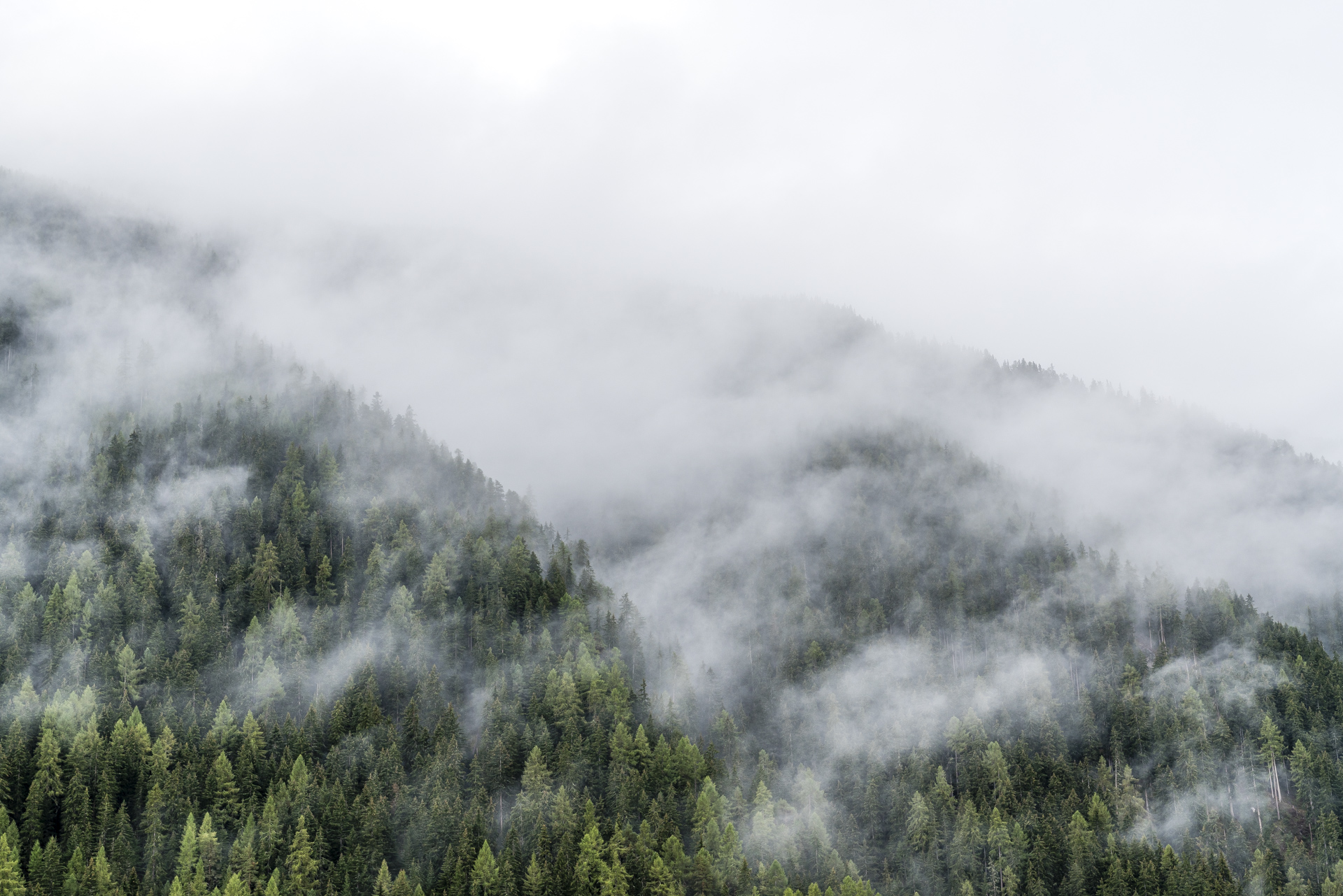
Whether sun, rain or snow: 9 all-weather excursion tips around Scuol
Advertising: in cooperation with the Swiss Youth Hostels
What do you do when plans have been made for a hiking weekend in the Engadine and the weather forecast doesn’t seem to be compatible with this project at all? That’s what happened to me at the end of September. The date for this autumnal hiking weekend in the Scuol region and the Swiss National Park including the Münstertal had been fixed for a long time and the timing was perfect to experience the annual spectacle of the deer rut.
The initial confidence that “it will get even better” turned into a slight frustration as the date approached. “Does all the September rain really have to come down in one fell swoop on these three days?” We discuss back and forth – “postpone – but will the sun be kind to us?” Or just reschedule and put together an exciting bad weather program? After a short period of reflection, I decided on the latter and in retrospect I can say with complete conviction: good decision!
[alert color=”FFFFFF” icon=”Select a Icon” title=”Preiswerte Schweizer Weekendtrips“]
In cooperation with the Swiss Youth Hostels, this year I present you budget-friendly and seasonal ideas for short breaks in Switzerland. To kick off this series, I went in search of the best winter activities in the Davos Klosters region. On the second tour, we cycled over the panoramic hills of the canton of Bern in 3 days with stops in two very special jugis. The third tour took us from the Augstmatthorn to Interlaken and from there further along the Aare to the Zähringer town of Bern.
[/alert]
Fortunately, we have been able to experience Scuol and the Münstertal several times with sunshine and know the area comparatively well. By focusing on bad weather alternatives, we got to know a new facet of the region this year. As it happens, once you have come to terms with a situation, things turn out differently than expected. And so our (bad weather) weekend trip ended with a winter hike through the freshly snow-covered Engadine mountains – under a bright blue sky. For you, I have brought a colorful bouquet of all-weather excursion tips from these three days
1. Stalking for deer in Val Mingèr
As written in the introduction, our timing was coordinated with the time of the deer rut. And since we had already been out and about twice during the time of the deer rut in the national park without a telezoom, we didn’t want to let this third chance pass us by despite the announced rain front. So this time we packed the telephoto zoom in our backpacks and arranged to meet hiking guide Lukas Barth at the starting point to Val Mingèr. Along with Val Trupchun, the valley is one of the places in the national park where the deer can be observed particularly well on the rutting grounds. And while we were still optimistic during the post bus ride from Scuol to Mingèr that the weather would hold up a little longer than predicted back here in the Lower Engadine, the rain starts just at the moment when we start our deer stalking.
According to Lukas Barth, the best way to observe the deer is from the resting place at the back of the valley (about 1.5 hours walking time from the starting point, just below the “Sur il Foss” pass crossing). But it doesn’t take long until the first deep roar echoes through the cloudy pine forest to us. The sound accompanies us all the way uphill towards the rest area.
Soon the rain turns to snow and sooner than we would like, this corner of the national park presents itself in winter garb. Lukas Barth is always on the lookout for deer on the ascent. But the cloud-shrouded steep slopes are a challenge even for trained eyes. The telephoto zoom is then used after all – at the top of the rest area we meet a group of chamois, which are grazing there completely unimpressed by the surprising snow flurry.
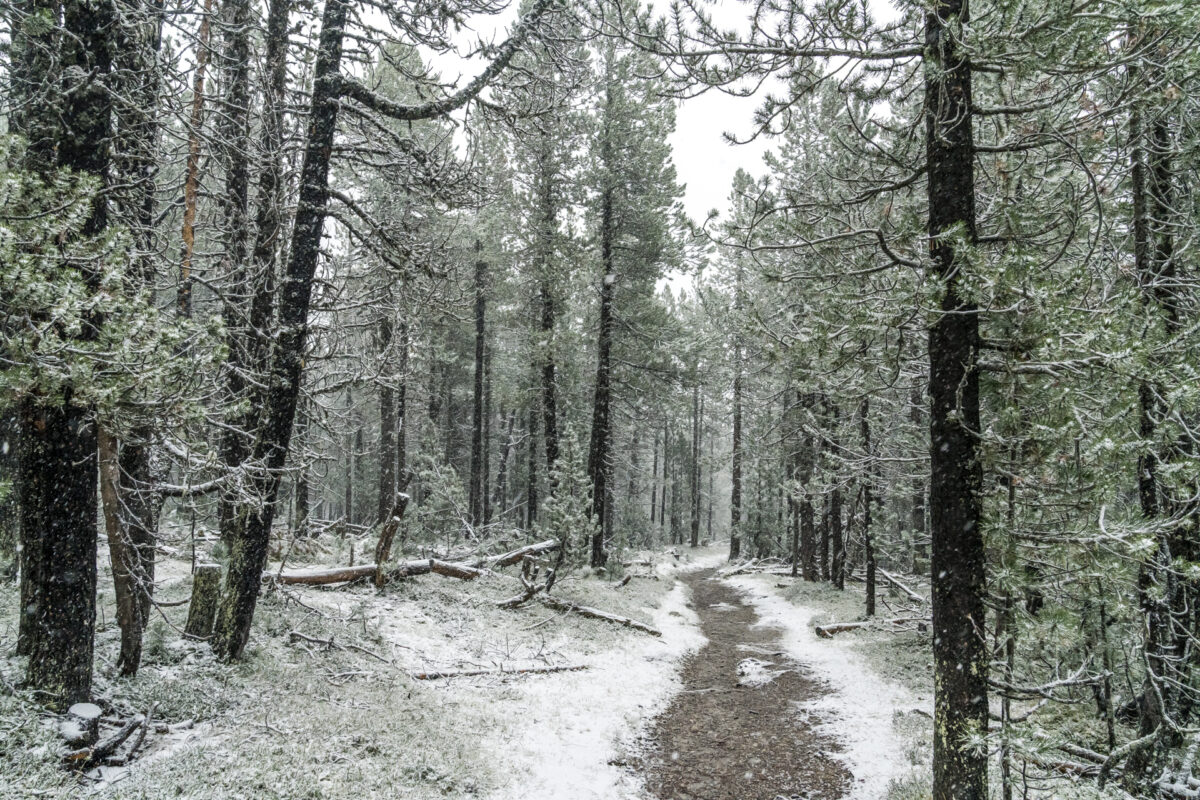
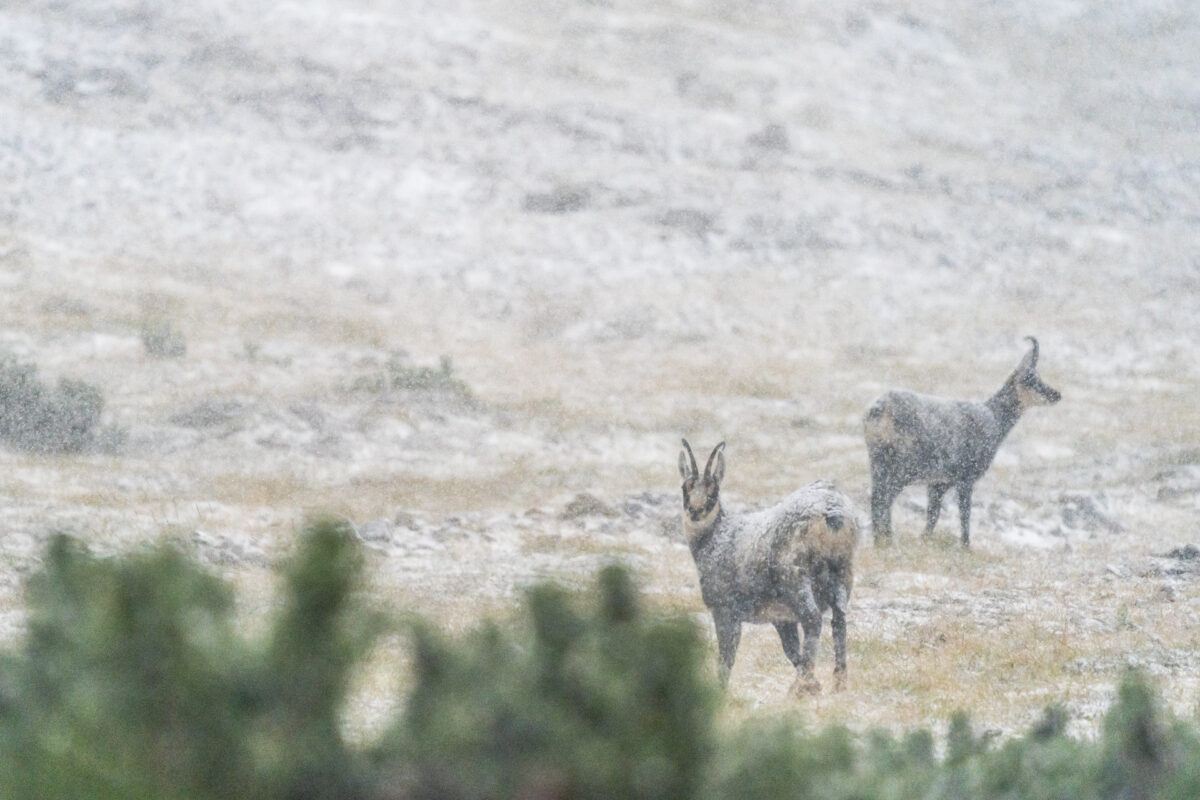
And although it didn’t work out with the hoped-for “deer picture” again, the guided hike through the Val Mingèr was a great experience despite the snow and rain. We have hiked through the valley before in good weather and while we focused our attention on the fantastic mountain scenery back then, today we concentrated on the sounds and the little things along the way. So I now know that a previously unknown species of wood ant was recently discovered in Val Mingèr.
2. Walk along the mineral water trail to the Nairs art gallery
During our last stay in Scuol two years ago, I explored part of the Mineral Water Trail. Due to lack of time, however, I decided not to use the loop to the “Büvetta Tarasp” drinking hall, which is located a good 30 minutes’ walk from Scuol train station in the valley floor on the banks of the Inn. While the almost 150-year-old building is located in a danger zone and is therefore unfortunately not accessible at the moment, the equally historic bathhouse right next to it is used by the Fundaziun Nairs. Founded in 2005, the foundation is committed to the preservation of the ensemble and at the same time promotes exchange between artists. For this purpose, the former bathhouse was transformed into an artist’s house with an art gallery and cultural laboratory.
The Kunsthalle Nairs is open from Thursday to Sunday (from 3:00 p.m.) and shows changing exhibitions of works from contemporary art. A detour that is equally worthwhile for people interested in architecture and culture and gives you a good reason to take a walk in the fresh air even in “bad weather”.
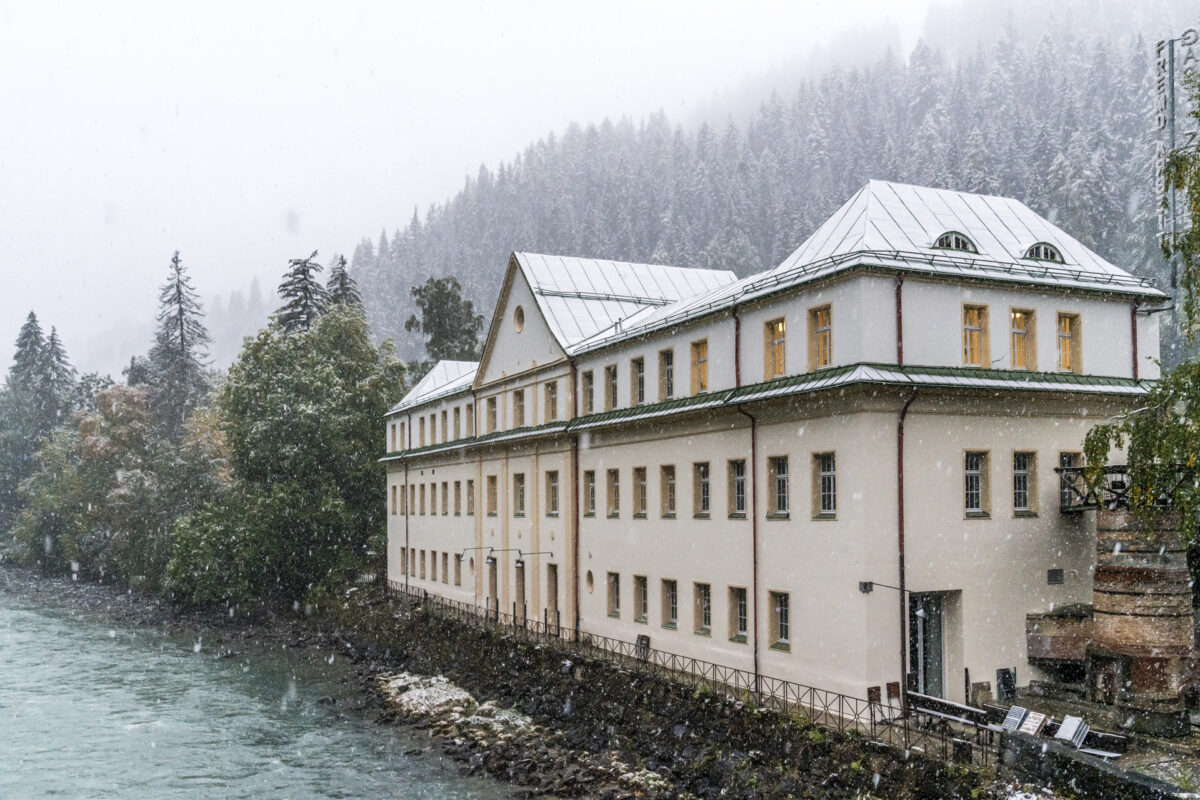
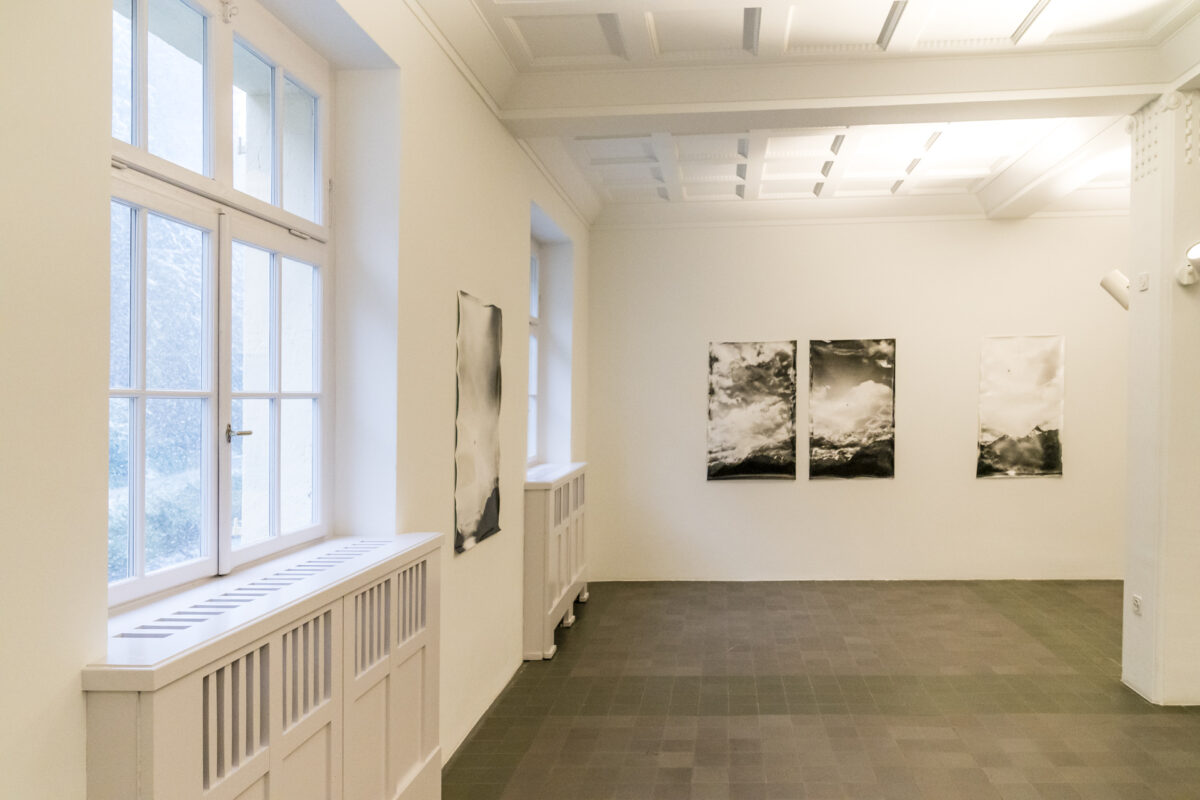
3. Plan an art and culinary stop in Sent
It’s actually remarkable that I’ve never made it to Sent in all my previous trips to the Lower Engadine. The traditional village was once the largest in the Lower Engadine and is home to some well-known personalities. Among them is one of the most famous contemporary artists of the moment – Not Vital. In his home village, Not Vital has created the “Parkin” sculpture park, an attraction that can be visited as part of a guided tour.
In Sent, however, there are not only contemporary works to admire, but also an impressive collection of the graphic work of Alberto Giacometti. This is thanks to the passionate art collector and hotelier Carlos Gross, who transformed the former Hotel Rezia in Sent into the charming Pensiun Aldier and at the same time made his extensive lithograph collection accessible to a wide audience in the vaulted cellar with the Alberto Giacometti Museum.
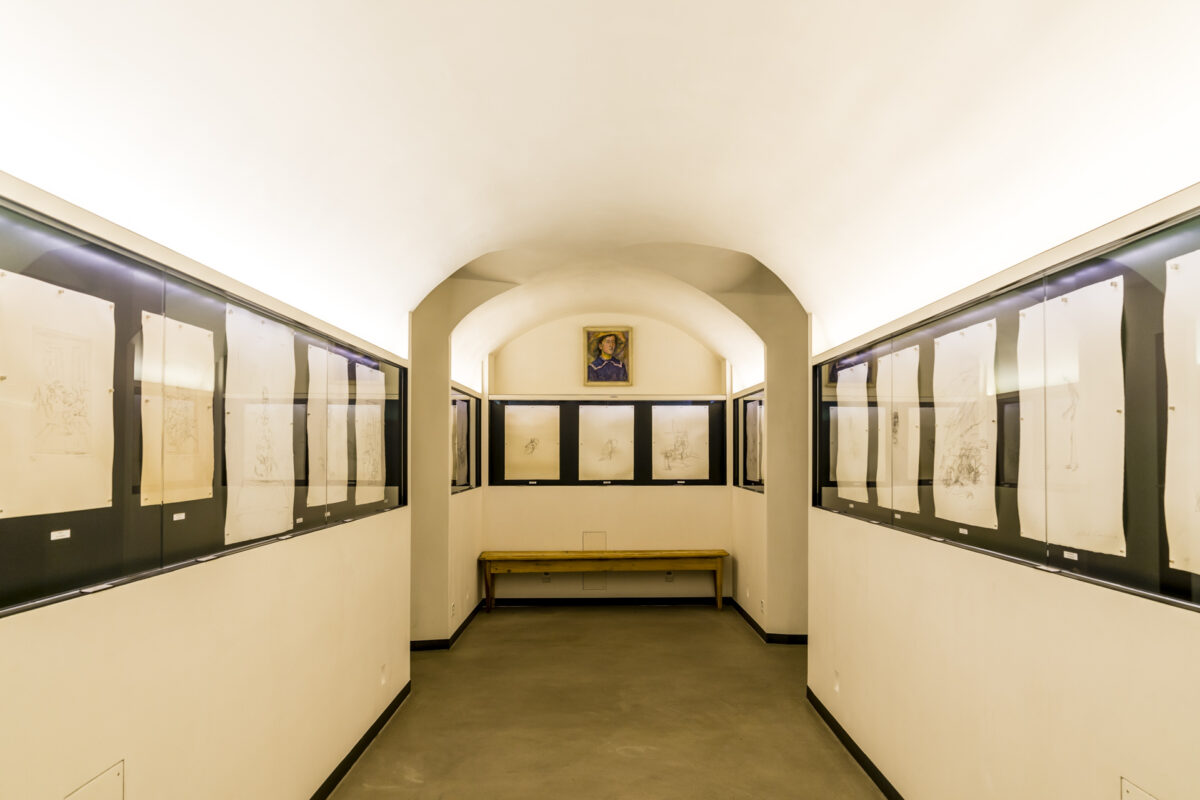
Now, of course, you can only go to Sent for a visit to the museum or combine it with a dinner at the Pensiun Aldier. Everyone who dines here enjoys free admission to the museum. But with the cuisine that has been awarded a Bib Gourmand, this is – at least for the foodies among us – just a nice bonus. For me, the art here definitely takes place on the plates.
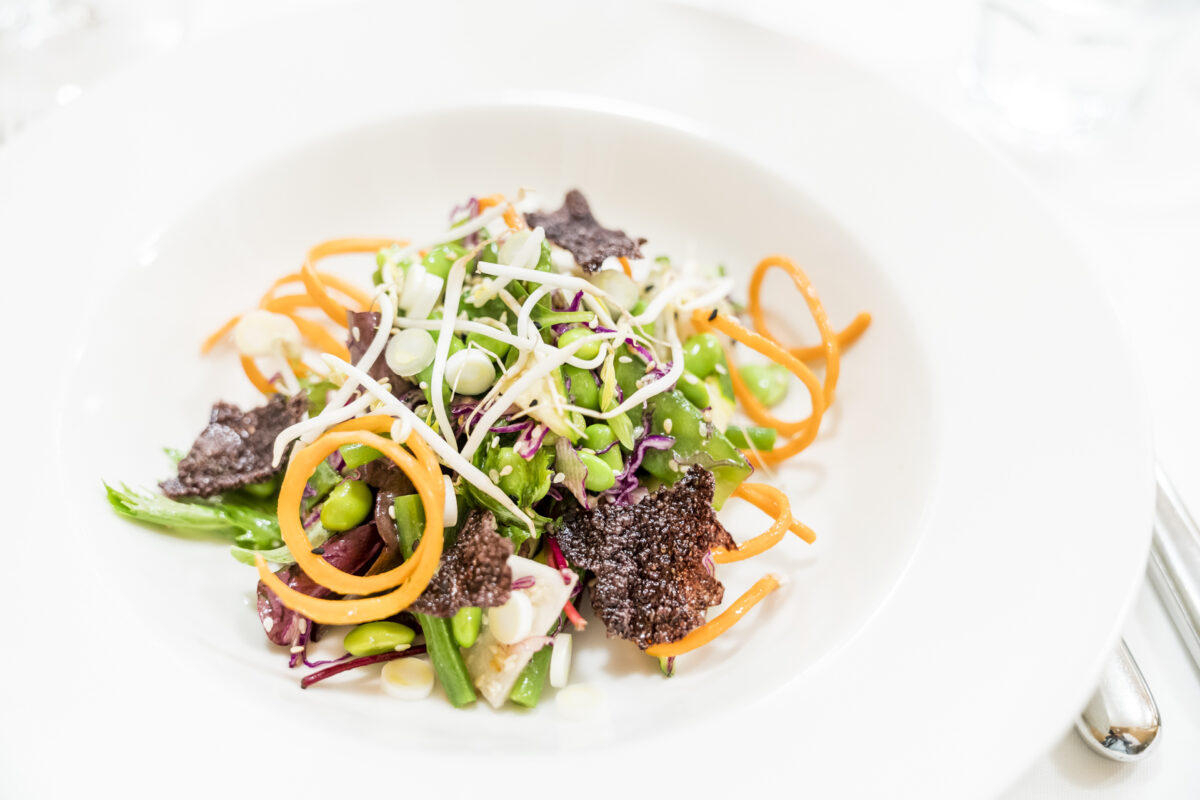
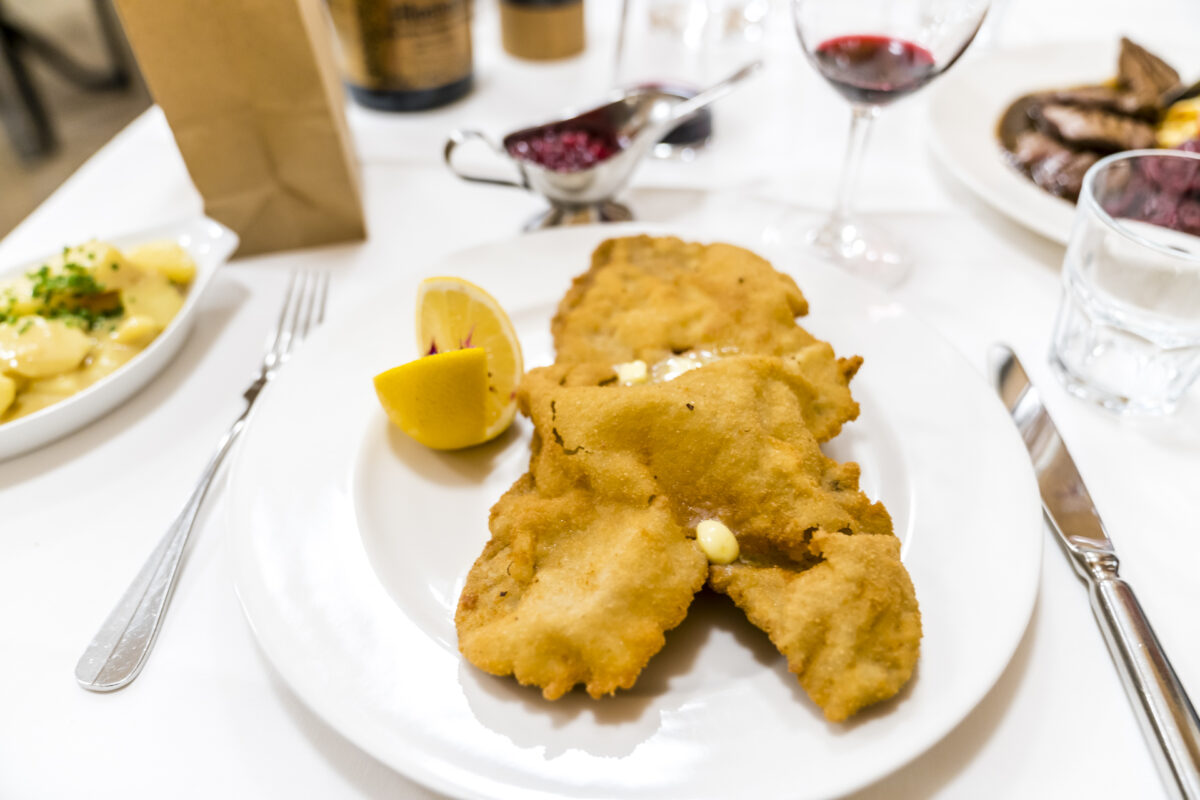
4. Take a guided tour of Tarasp Castle
One of my highlights of the bad weather program was the guided tour of Tarasp Castle. The mighty fortress is one of the most formative buildings in the Lower Engadine – which makes it all the more exciting to take a look behind the thick walls and learn more about the history of the complex. In 2016, local hero Not Vital bought the facility. His goal: to develop Tarasp Castle into a cultural attraction with contemporary art. In the meantime, he has already put a lot of effort into the further development of the palace complex and in 2018 inaugurated his third “House to watch the sunset” here after Niger and Brazil. The artwork is freely accessible (but fenced off for security reasons).
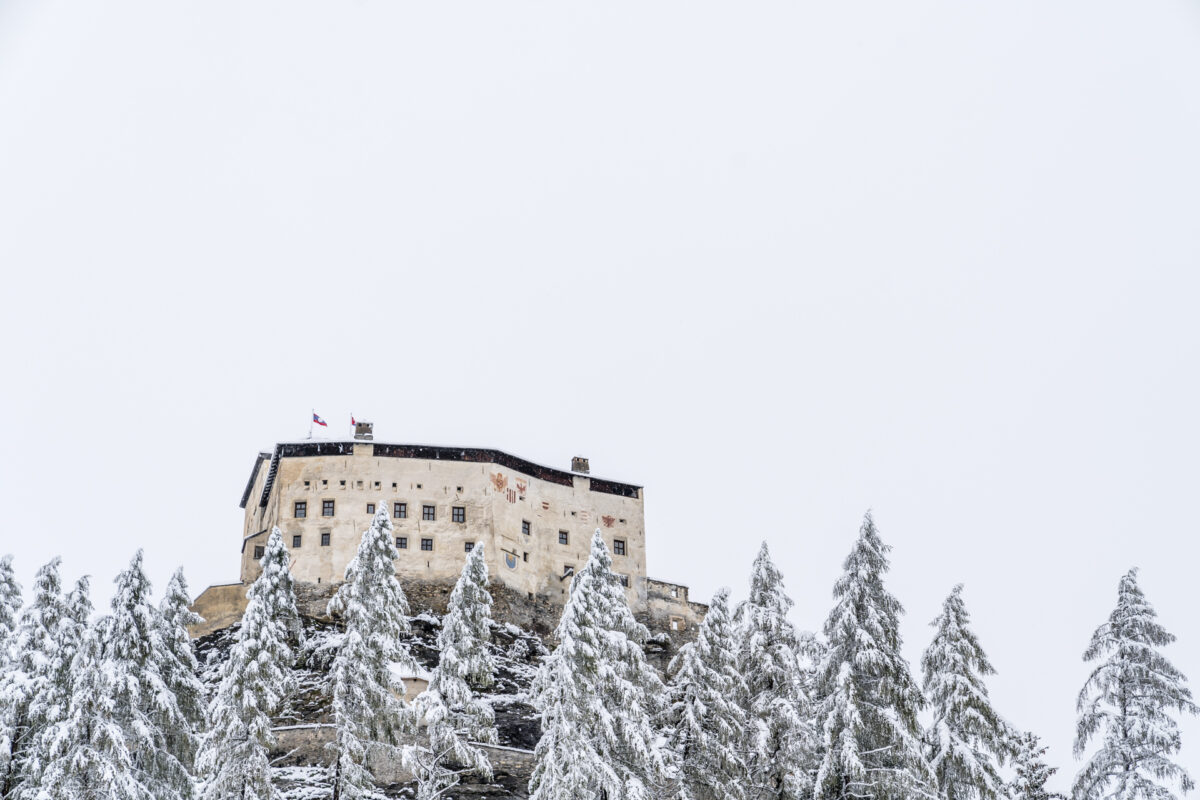
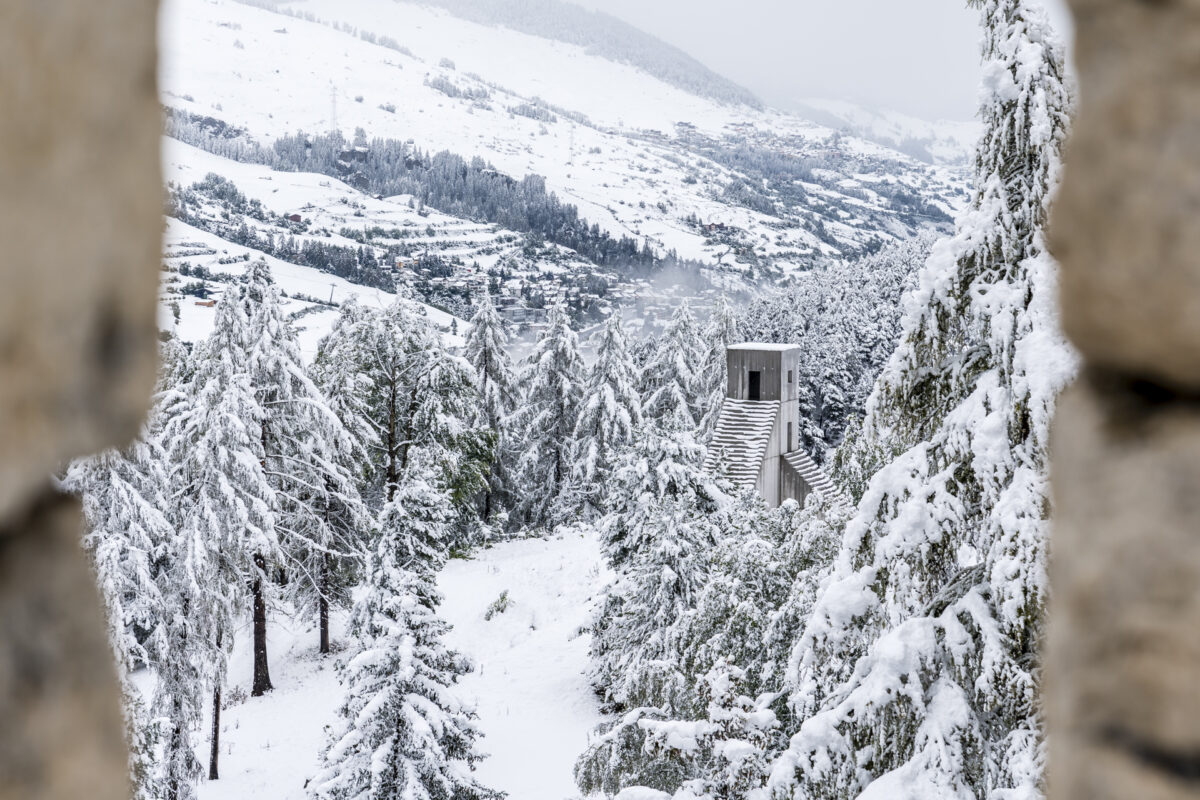
The view into the castle premises, on the other hand, is currently only possible with a guided tour, although public tours take place regularly. In the last century, the Dresden industrialist and patron Karl August Lingner had a significant influence on the interior of the palace. He bought the complex in 1900 and then had it renovated in the style of historicism at great expense and cost. In combination with the contemporary works from the collection of Not Vital (or artists commissioned by him), the tour of Tarasp Castle today invites you through a colourful journey through art history.
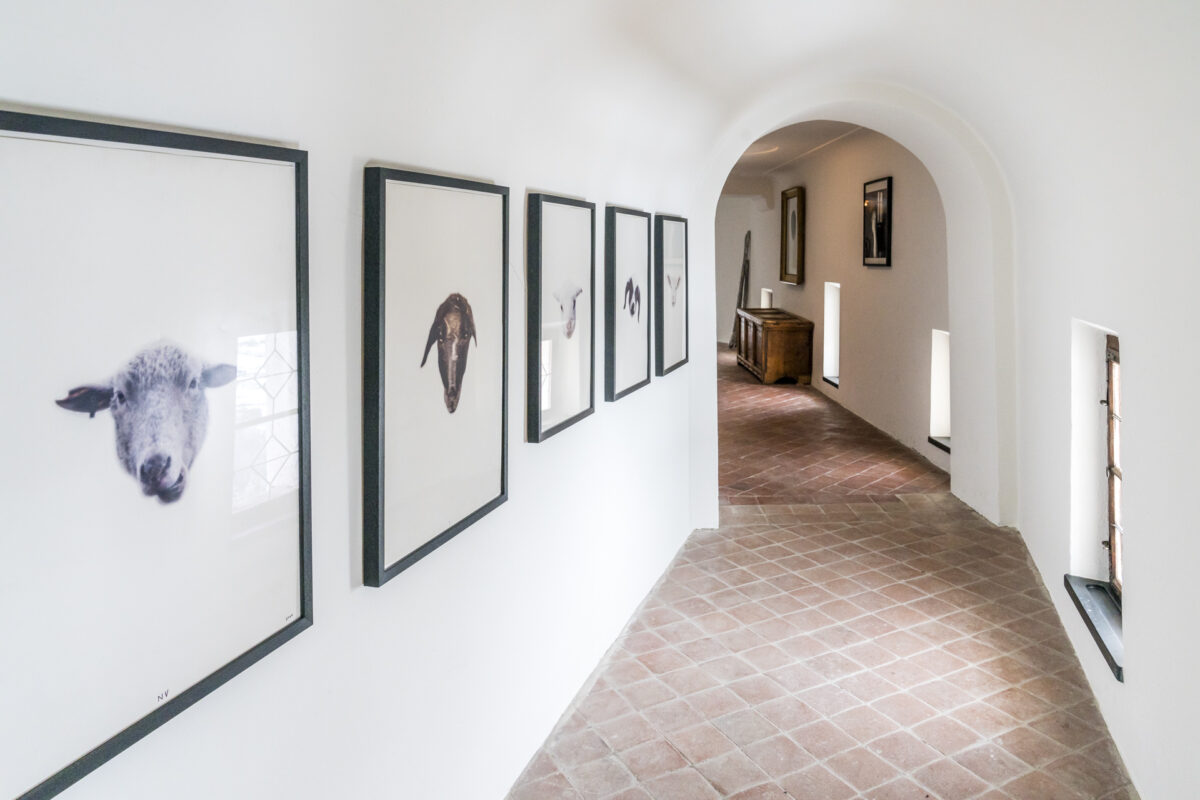
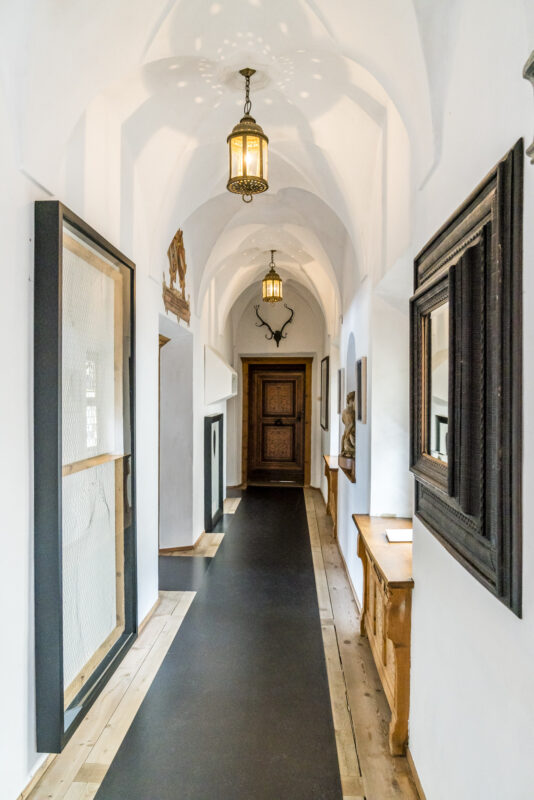
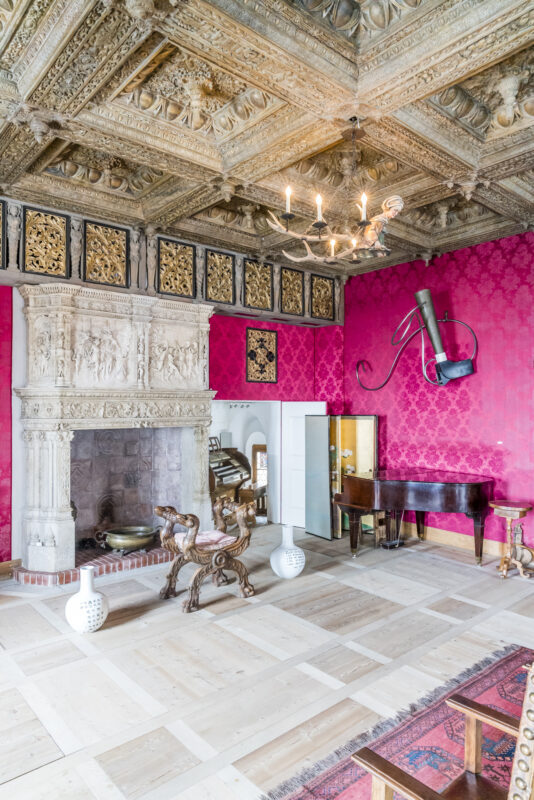
5. Relax in the Bogn Engiadina mineral bath
There is no bad weather programme without a visit to the Bogn Engiadina mineral baths. The bathing area in the middle of the village centre of Scuol is the perfect place to treat yourself to a day of regeneration on a rainy day and to relax surrounded by pleasantly warm water. With six indoor and outdoor pools with massage jets, bubble loungers and brine pools, as well as an impressive sauna area and a Roman-Irish bath, people spread out so well that even on a classic “bathing day” it is far from full.
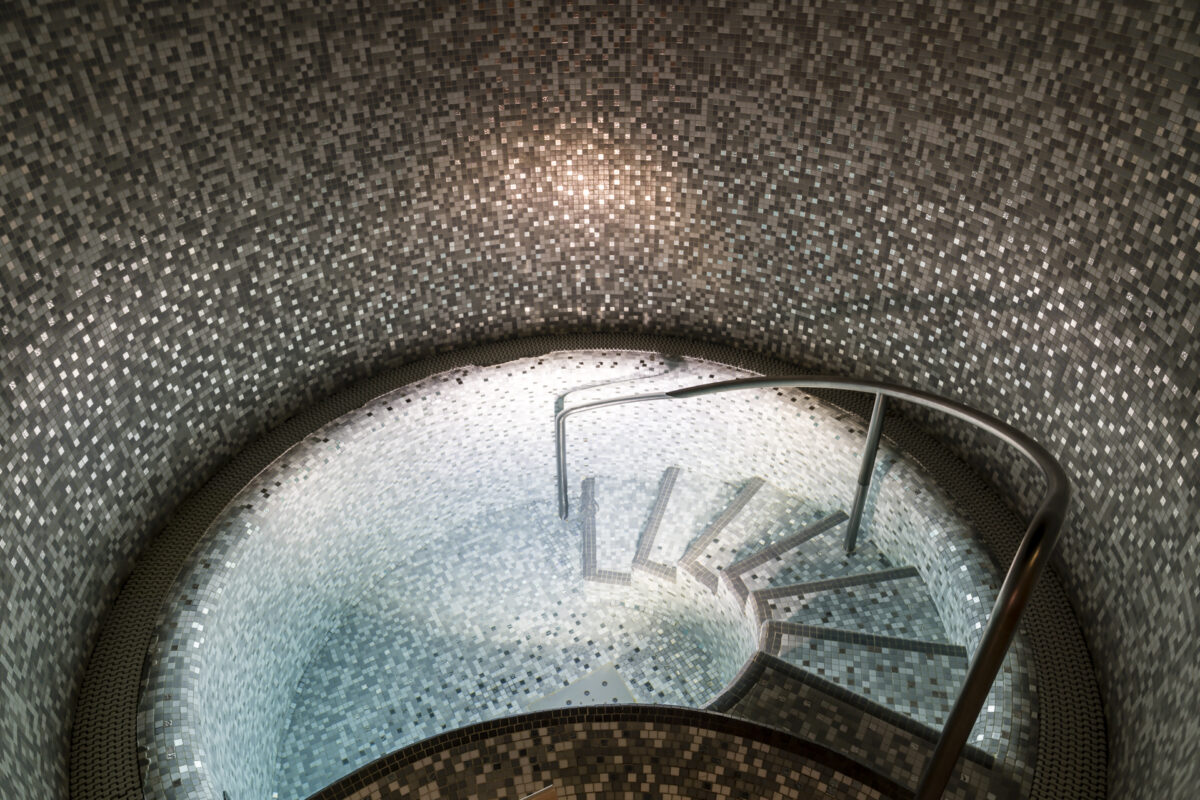
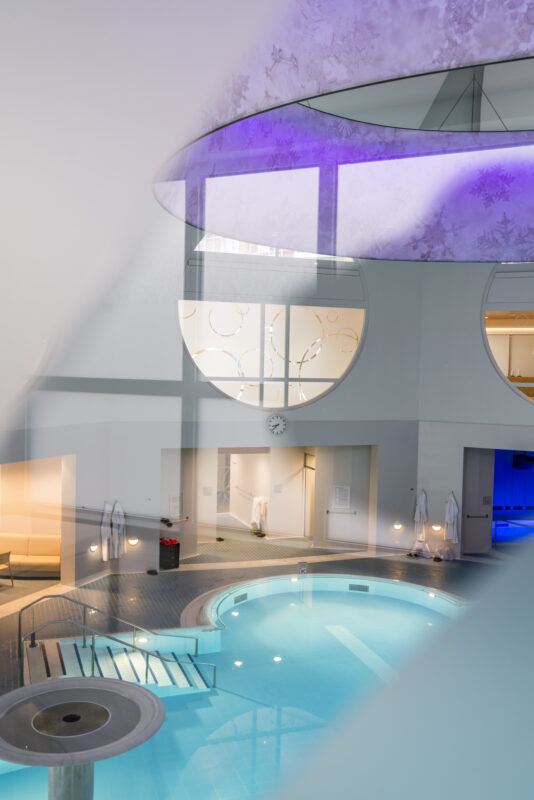
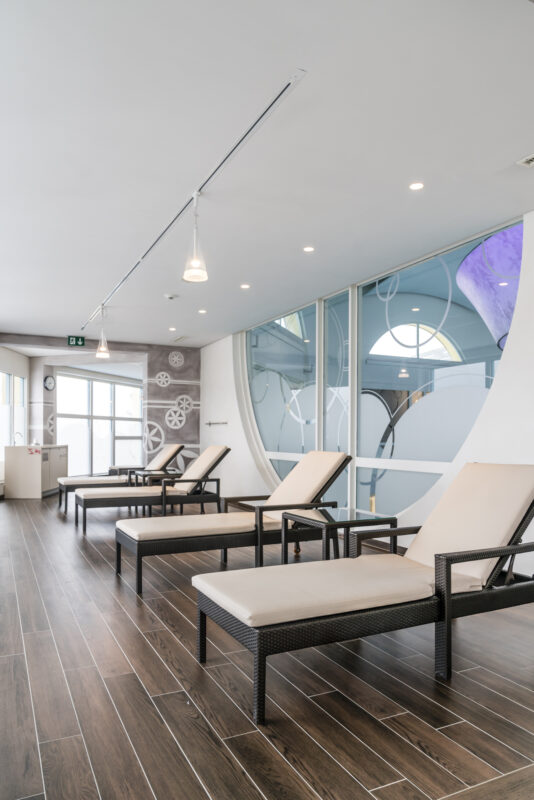
By the way, the walkway with two mineral water fountains is very cool, where the mineral-rich water of the Sotsass and Vi springs gushes out.
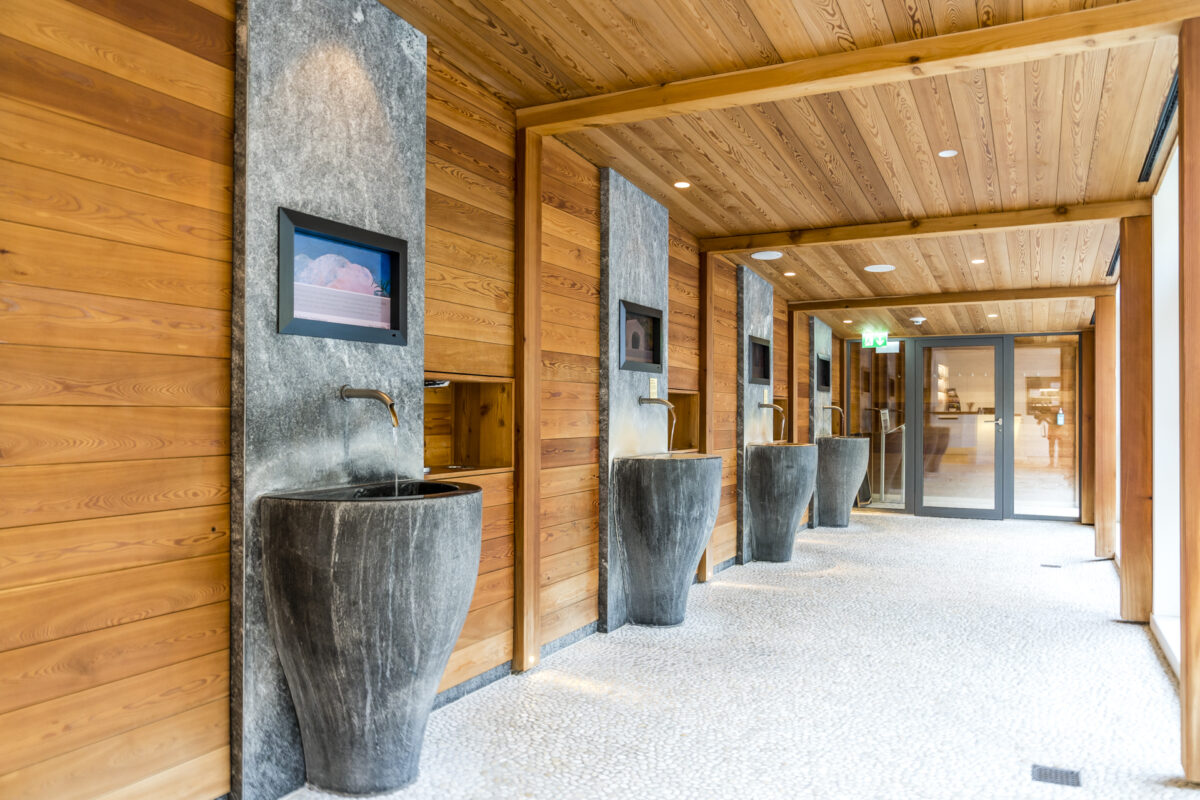
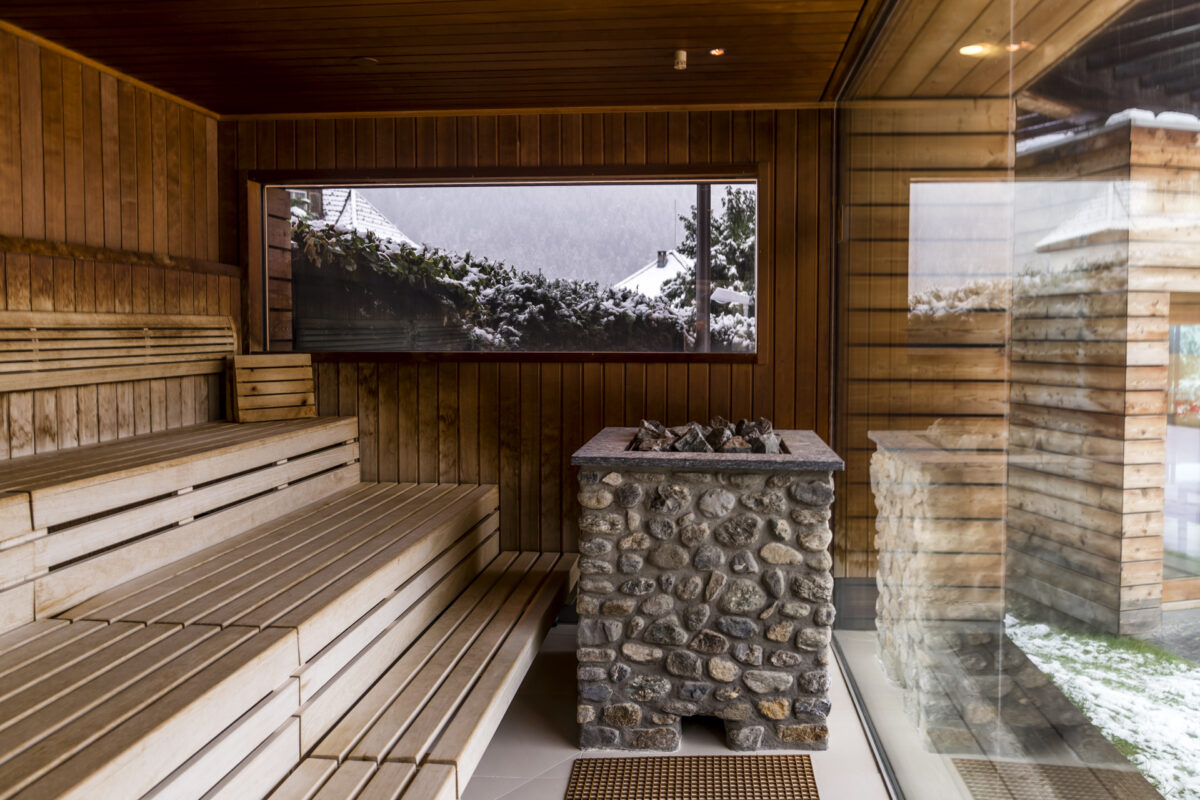
6. Spend an afternoon playing and reading at the Scuol Youth Hostel
Our base camp for all these activities is the Scuol Youth Hostel, which is located directly opposite the Scuol-Tarasp train station. The new building, which opened in 2007, is characterised by a modern architectural language that is also based on the Engadine building tradition – this is already evident from the outside in the typically deep window alignments. Far less conspicuous is the artwork by Not Vital integrated into the entrance area. “Buatschas” or in good German – cow patties – remind us of the original use of the area as a cattle market.
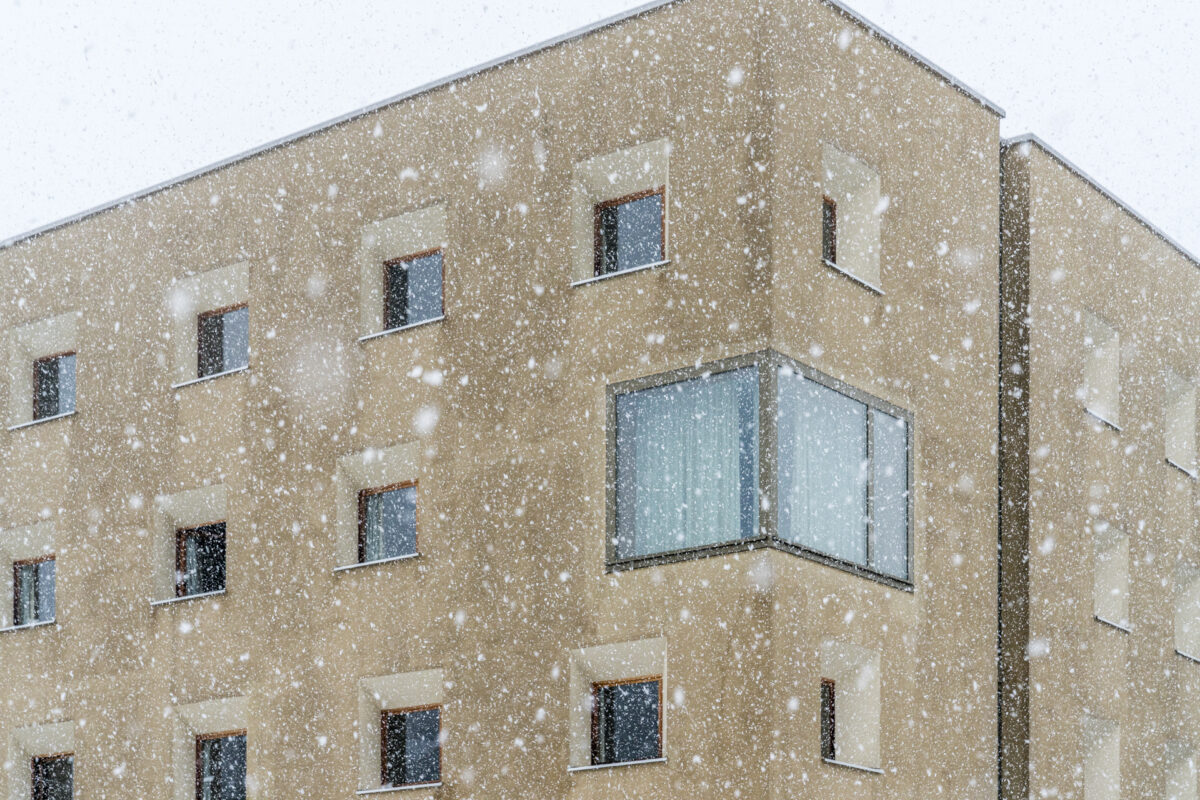
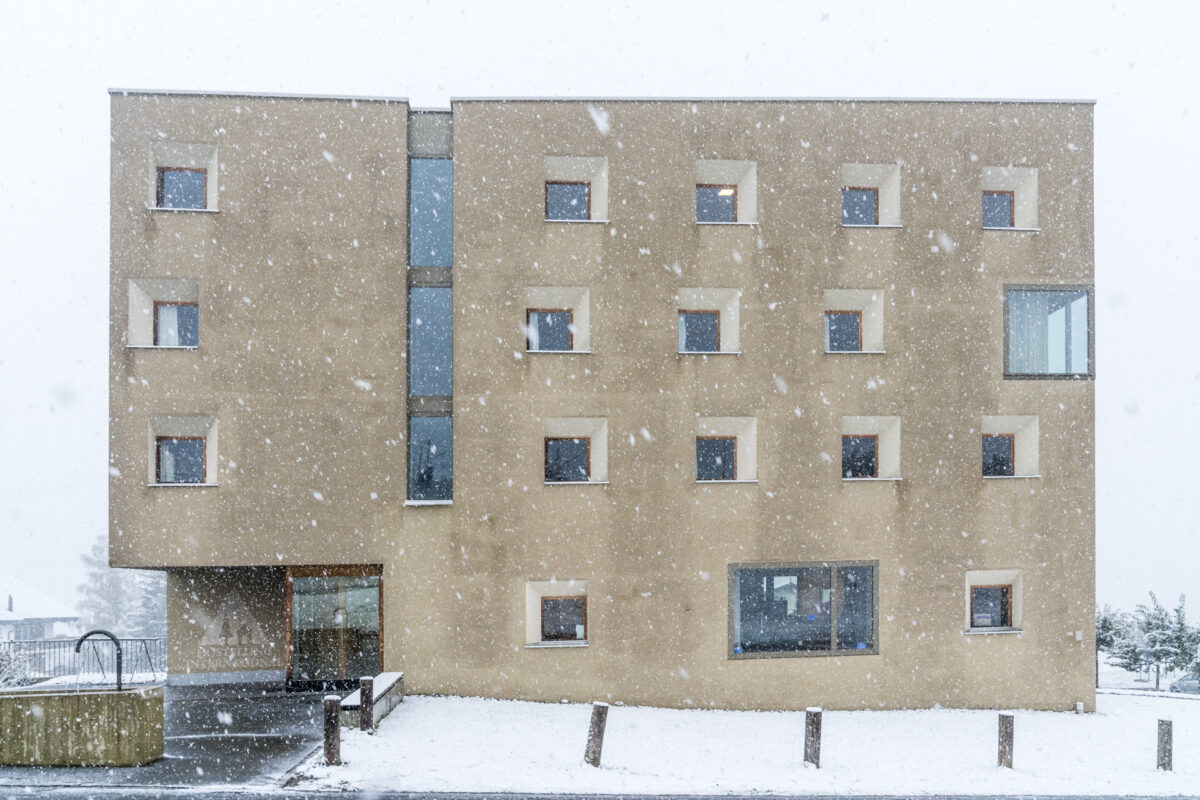
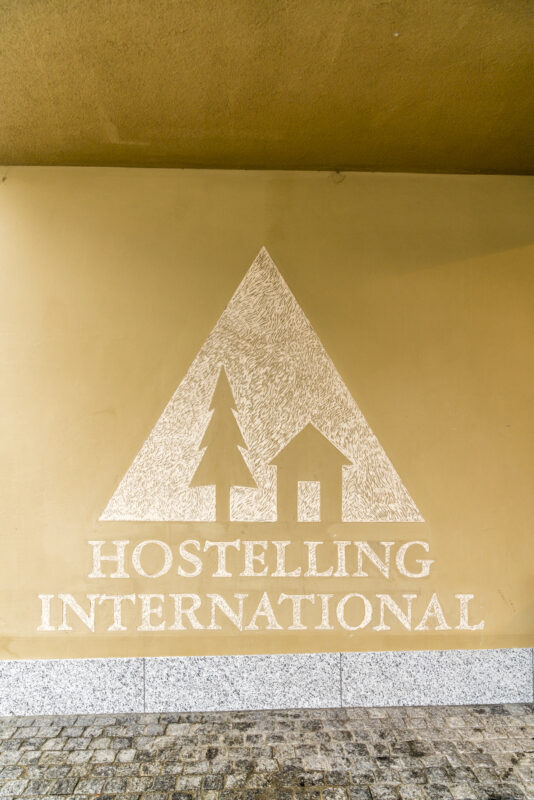
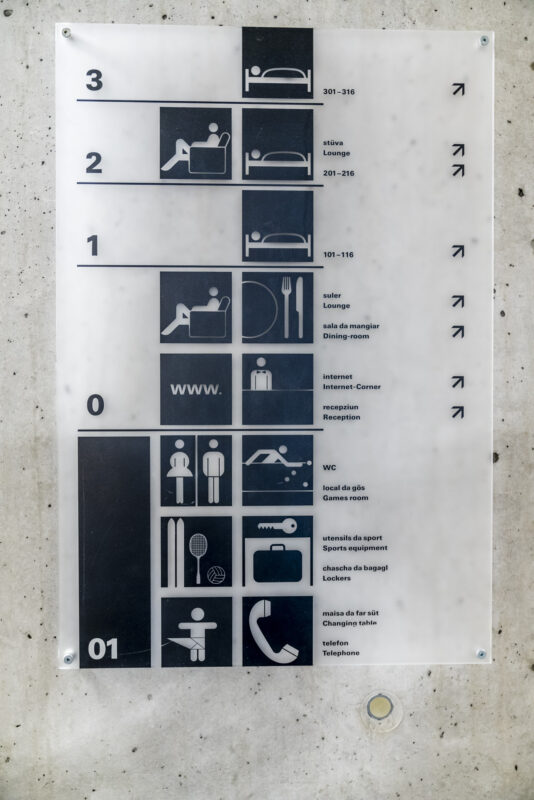
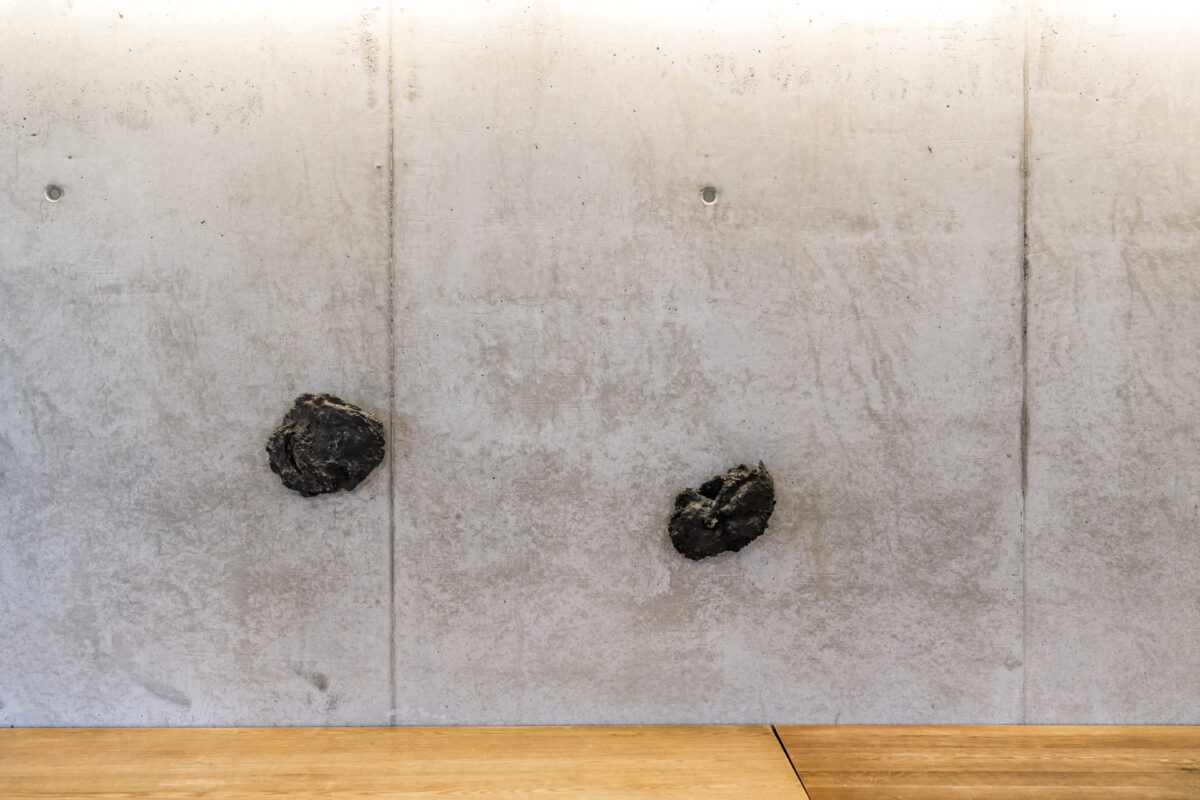
Inside, materials similar to those we have already encountered in the modern youth hostels in Gstaad, Interlaken or Bern are used: a successful combination of cool exposed concrete ceilings and warm wooden floors. I like this reduced and at the same time very practical style.
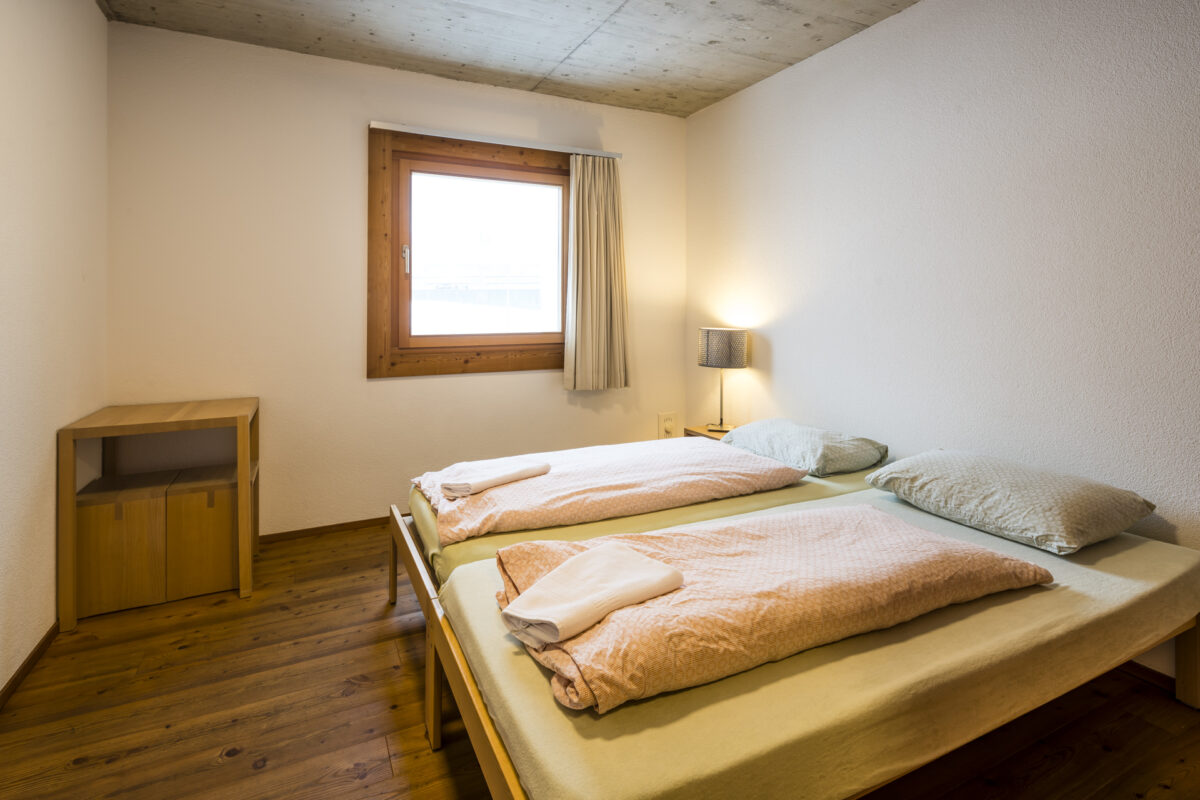
The entrance area is very inviting with a spacious lounge and an open fireplace – here you can make yourself comfortable with an exciting book. There is also a selection of board games and a games room with a table tennis table and “Töggelikasten”. If it is too loud for you in the lounge (which was not the case with us), you can retreat to the cozy pine parlour on the second floor.
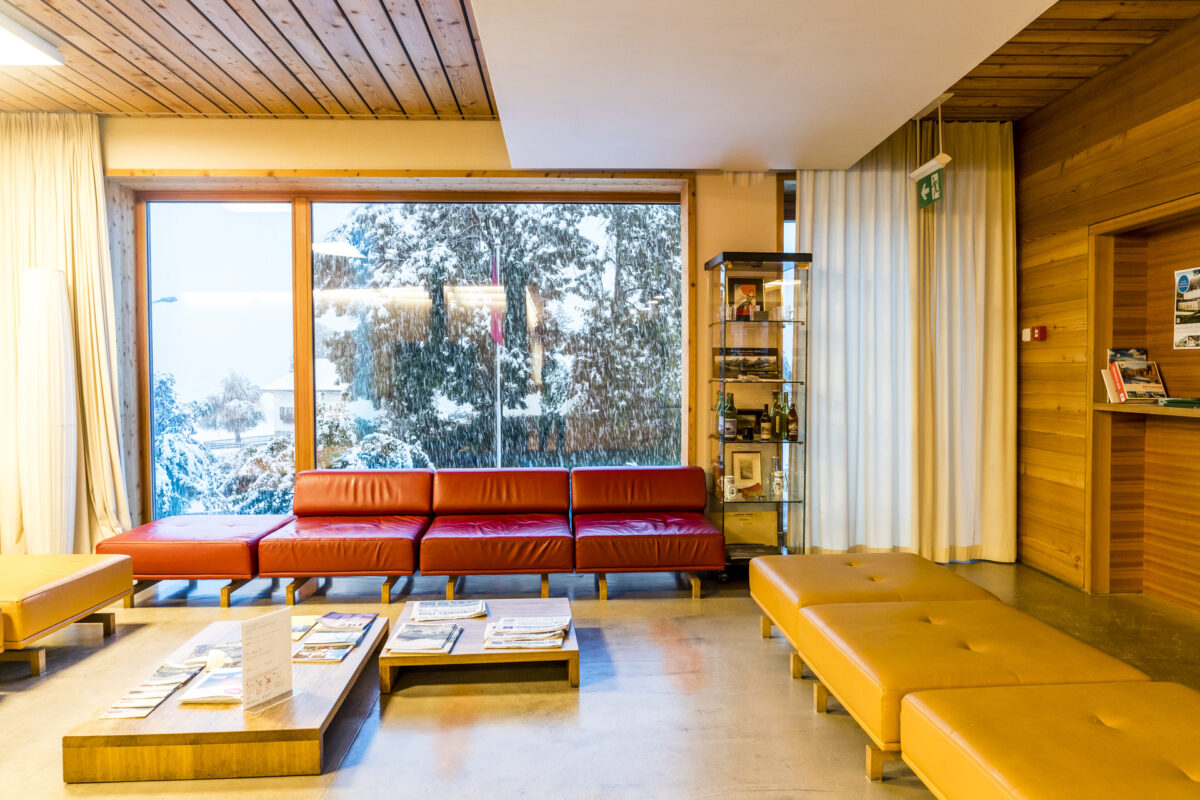
And if you don’t take a detour to Sent for dinner like we did, you can enjoy an inexpensive 3-course menu in the Jugi. The menu changes daily – the kitchen focuses on regional products.
7. Be fascinated by the Muzeum Susch
The regional focus is also evident in the breakfast buffet, where local cheeses are available, among other things. Anyway – with a selection of fresh, seasonal fruits (apples, pears, plums and plums) and cherry tomatoes and cucumbers (my breakfast favorites), the offer can easily keep up with many a 4-star hotel.
Thanks to its proximity to the train station, Scuol Youth Hostel is ideal for day trips to other corners of the Engadine. And you don’t necessarily need nice hiking weather for this. If you are interested in art, I recommend consulting the Engadin Art Guide. It contains no less than 18 leading art galleries and institutions, all of which would be exciting to visit.
These include the Muzeum Susch, which has been causing a sensation since the beginning of 2019. In the middle of tranquil Susch, a historic ensemble of buildings, some of whose substance dates back to the 12th century, has been transformed into a museum for contemporary art under the direction of Schmidlin and Luvo Architects. The initiator of this project is the Polish entrepreneur and patron of the arts Grażyna Kulczyk. The project has been awarded the title of “Building of the Year 2019” and has been nominated for the European Museum Award (Emya) 2020 along with seven other Swiss museums.
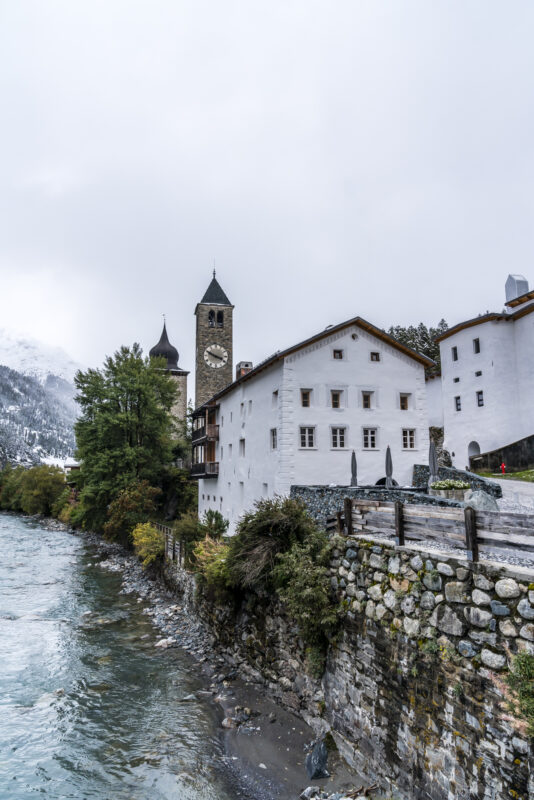
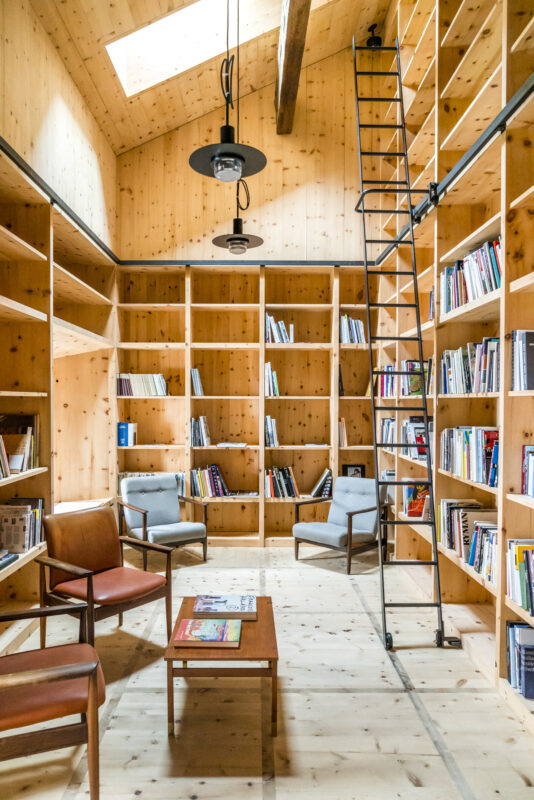
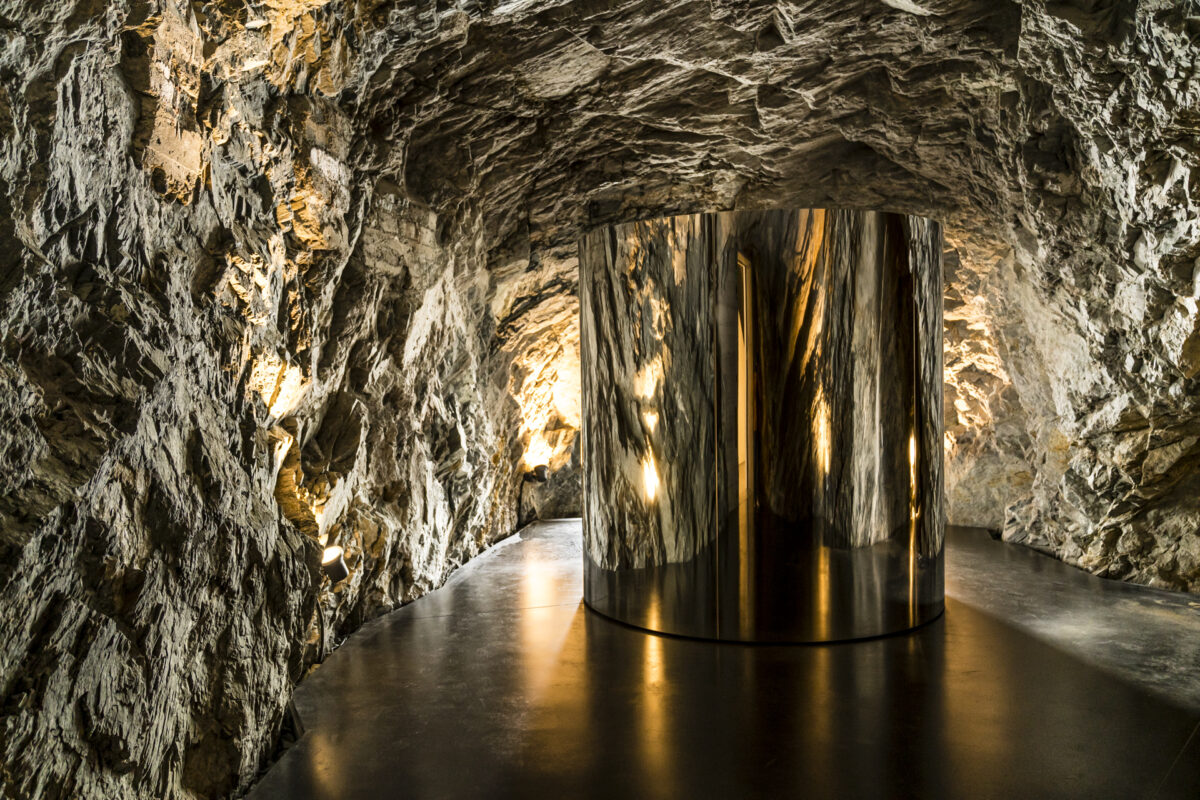
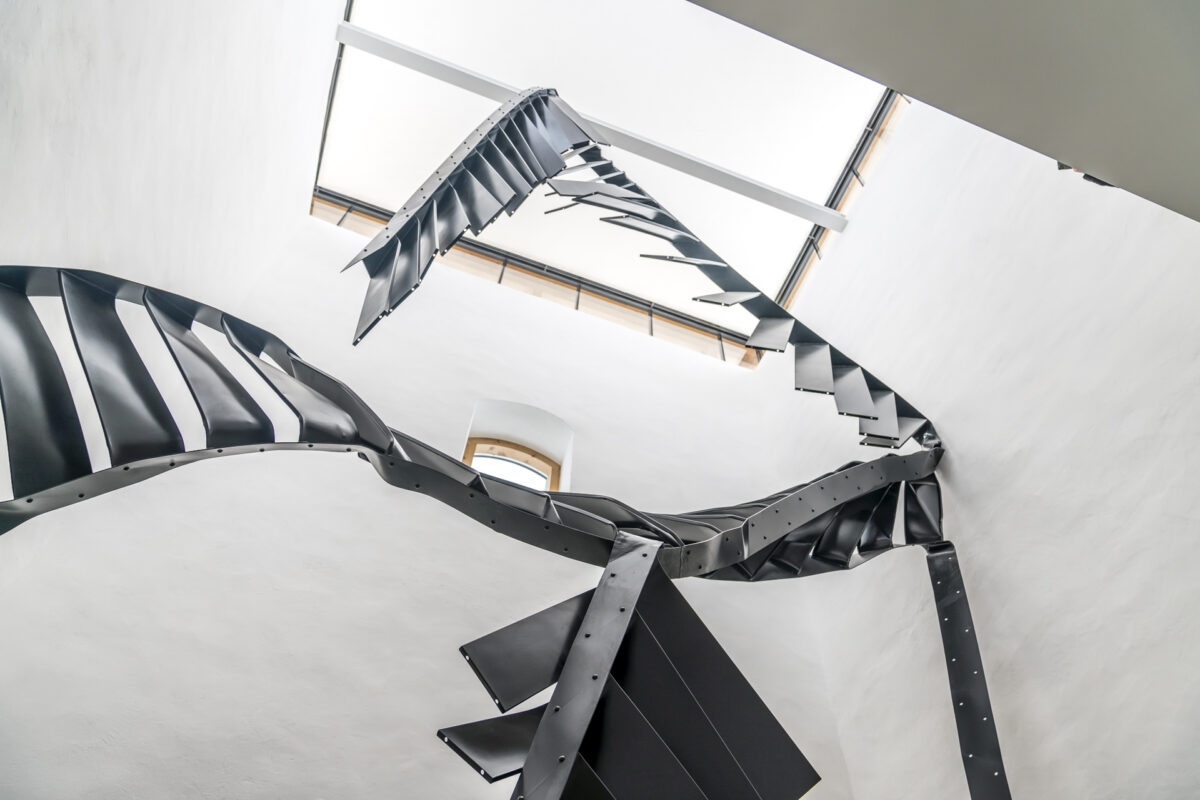
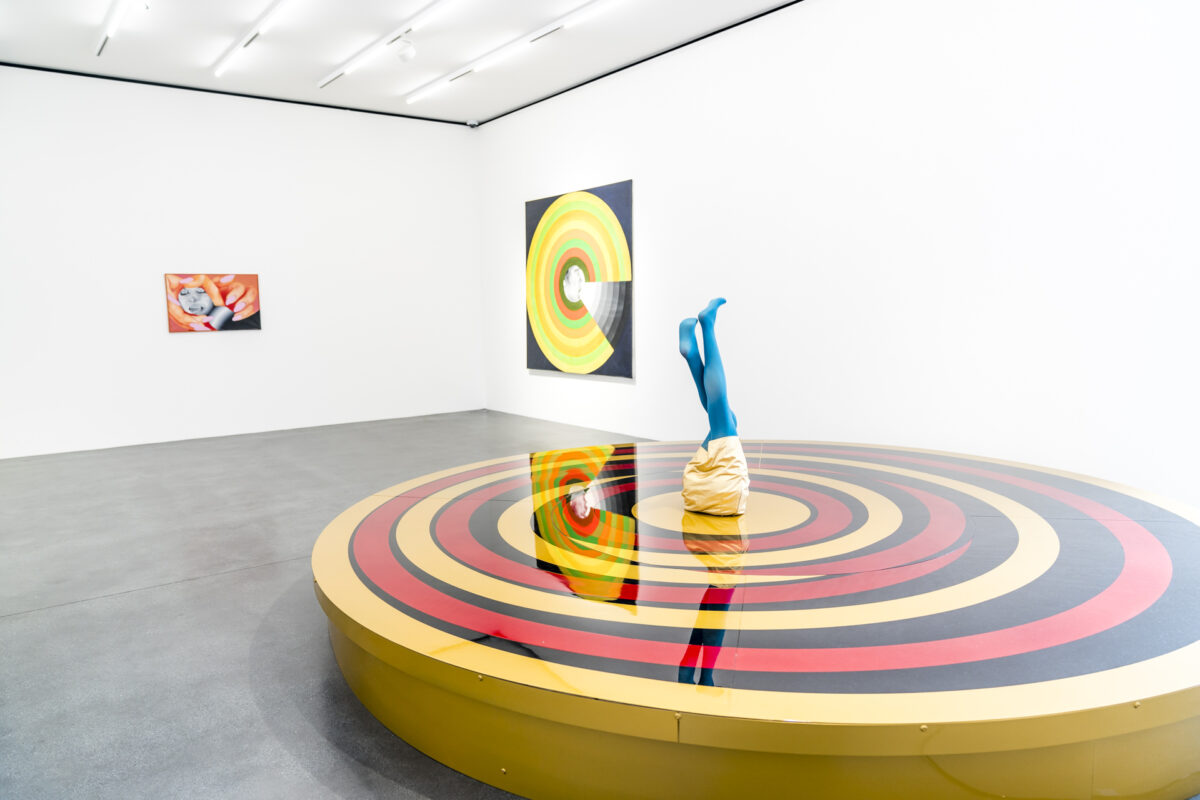
In addition to well-designed exhibition rooms and complementary sculptures in the outdoor space (including a recent work by Not Vital), you can also enjoy a really fine meal in the “Hatecke Ustaria” – the museum restaurant. Depending on the timing, however, this requires a little patience – the processes have great potential for optimisation.
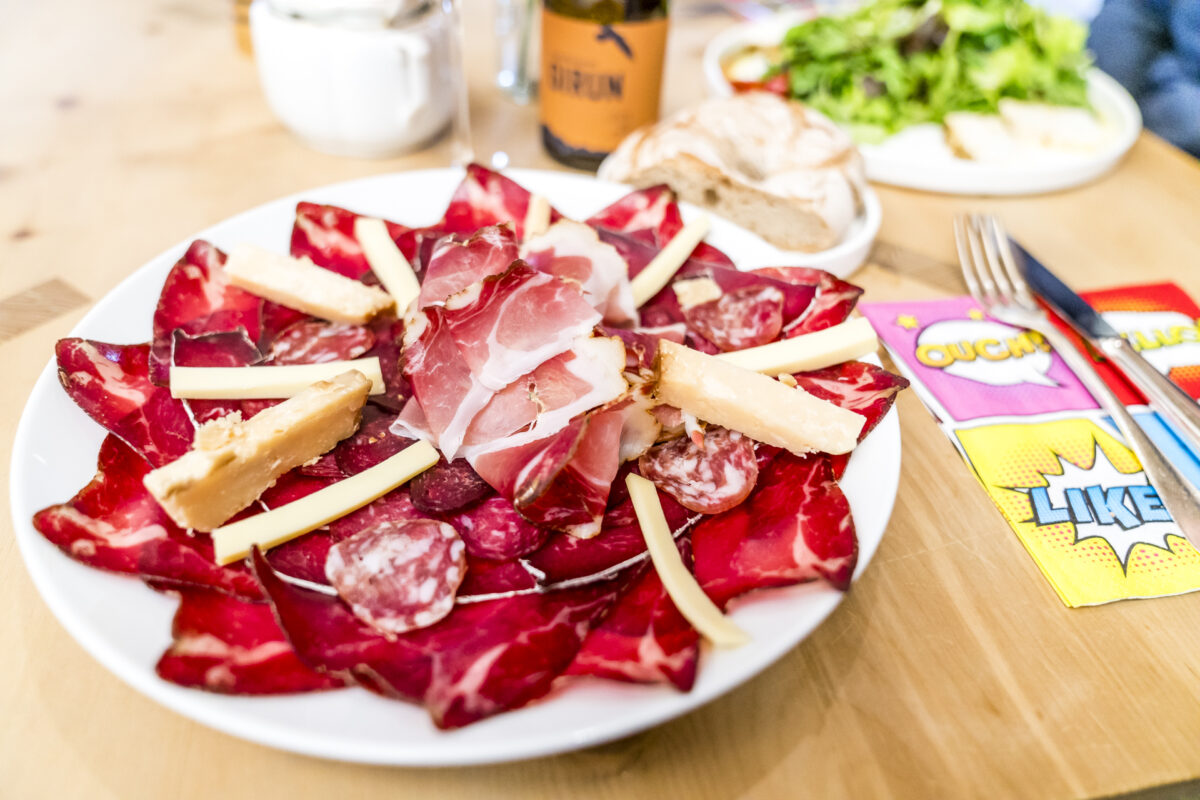
8. Take a detour to the Münstertal
Another worthwhile detour leads via Zernez over the Ofen Pass into the Münstertal. This can be implemented either as a day trip – or in our version with “Jugi-Hopping”. Depending on the time available and interest, the excursion can also be combined with a stop at the National Park Centre in Zernez.
The most famous sight in the Münstertal is the monastery of St. Johann in Müstair, which is classified as a UNESCO World Heritage Site. The monastery can be visited either as part of a guided tour (until the end of October there are two guided tours per day) or individually.
In the neighbouring village of Müstair – in Sta. Maria, there is also a lot to discover between the houses built close to each other in the town centre; These include the Tessanda hand-weaving mill, the historic Muglin Mall mill and the Museum 14/18 as an information centre on the history of war on the Stelvio Pass.
Directly behind the Museum 14/18 – in a charming building from the 16th century is the youth hostel Sta. Maria. Visually, at first glance, it is a total contrast to the Scuol Youth Hostel – but in detail, many things are the same. The majority of the rooms here are without private shower/toilet. However, there is a 2-person room with an integrated shower (the room you see in the picture below and where we also stayed). All other rooms have access to the shared showers, which are practical and clean.
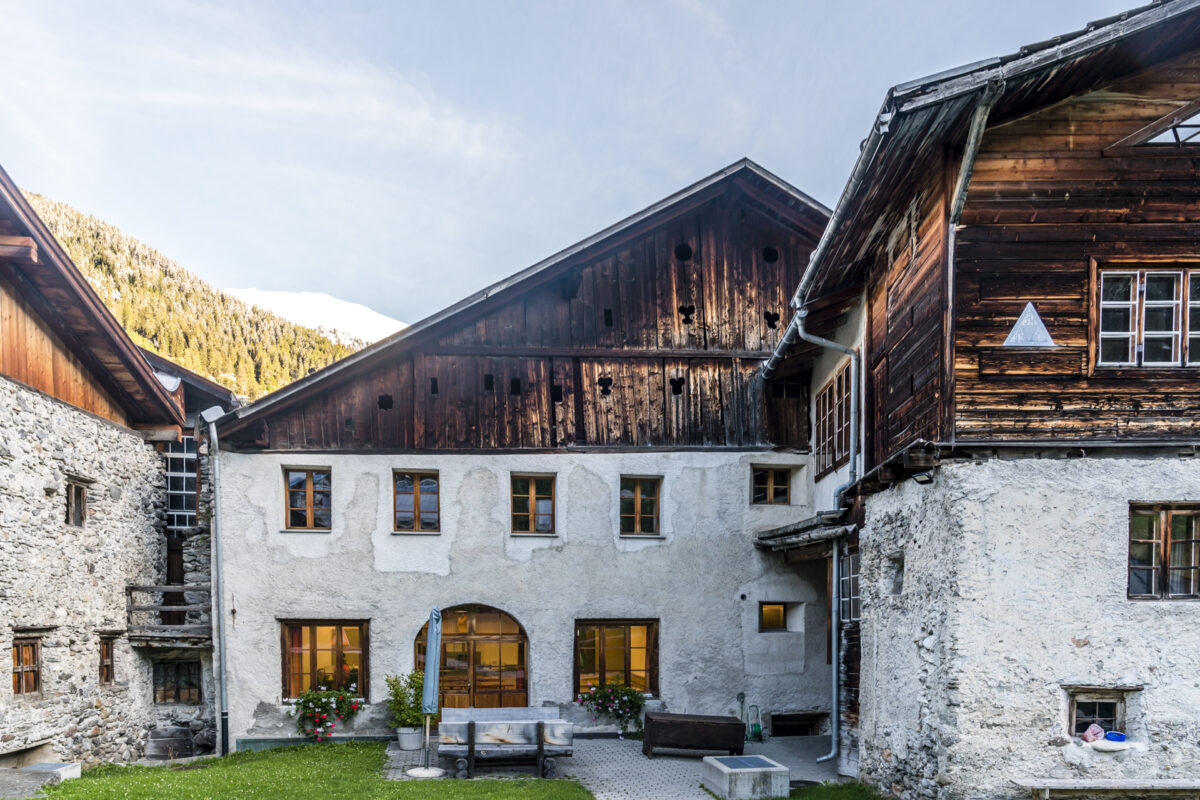
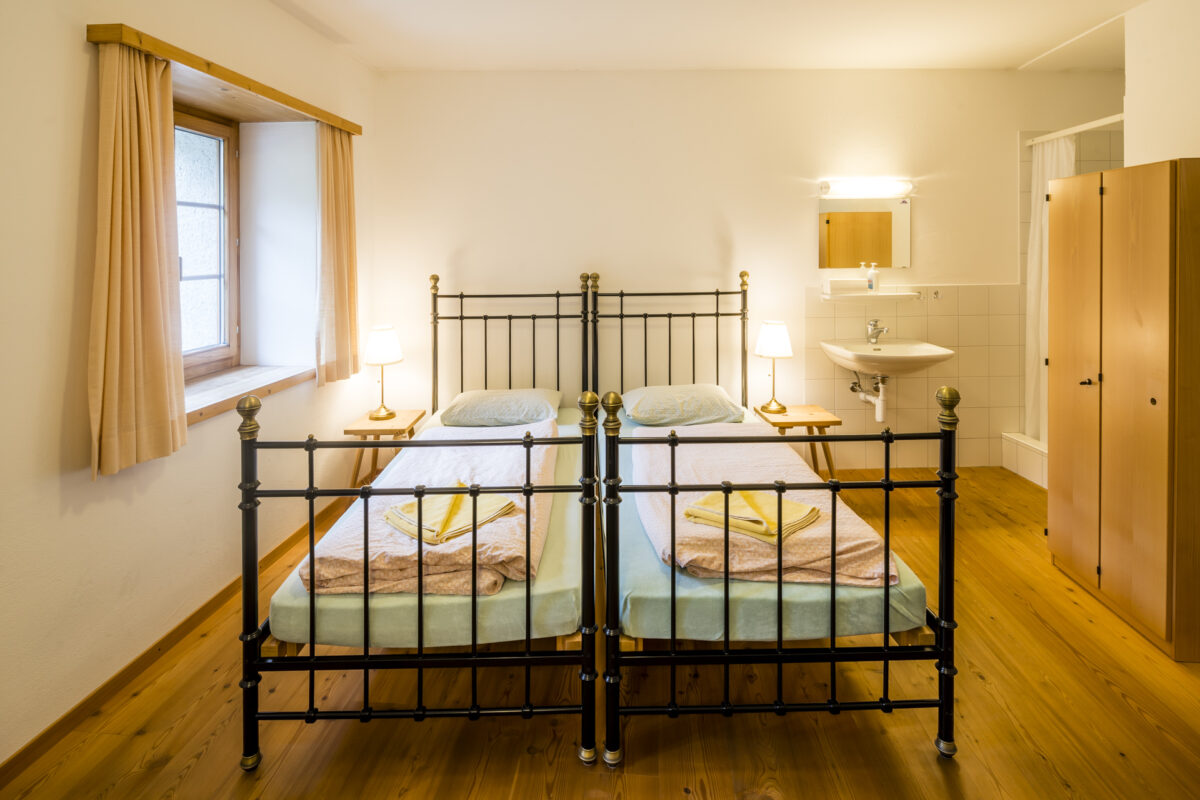
The magnificent Stüva with tiled stove as well as the many small refinements, such as the mini-library built into a cupboard, immediately trigger a “homely” feeling in me. A nice place to put your feet up and reflect on the day.
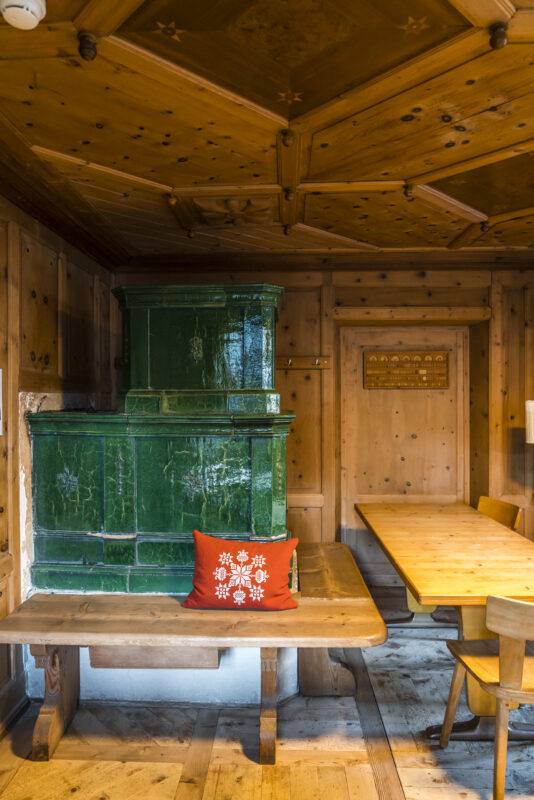
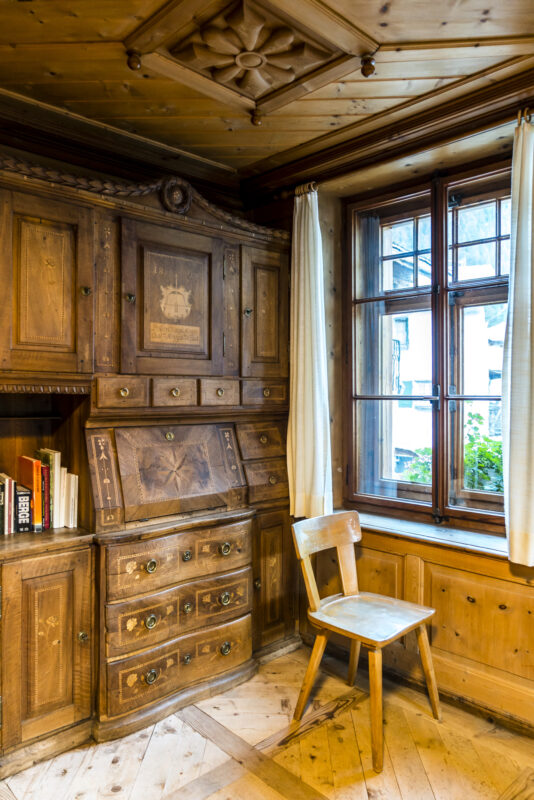
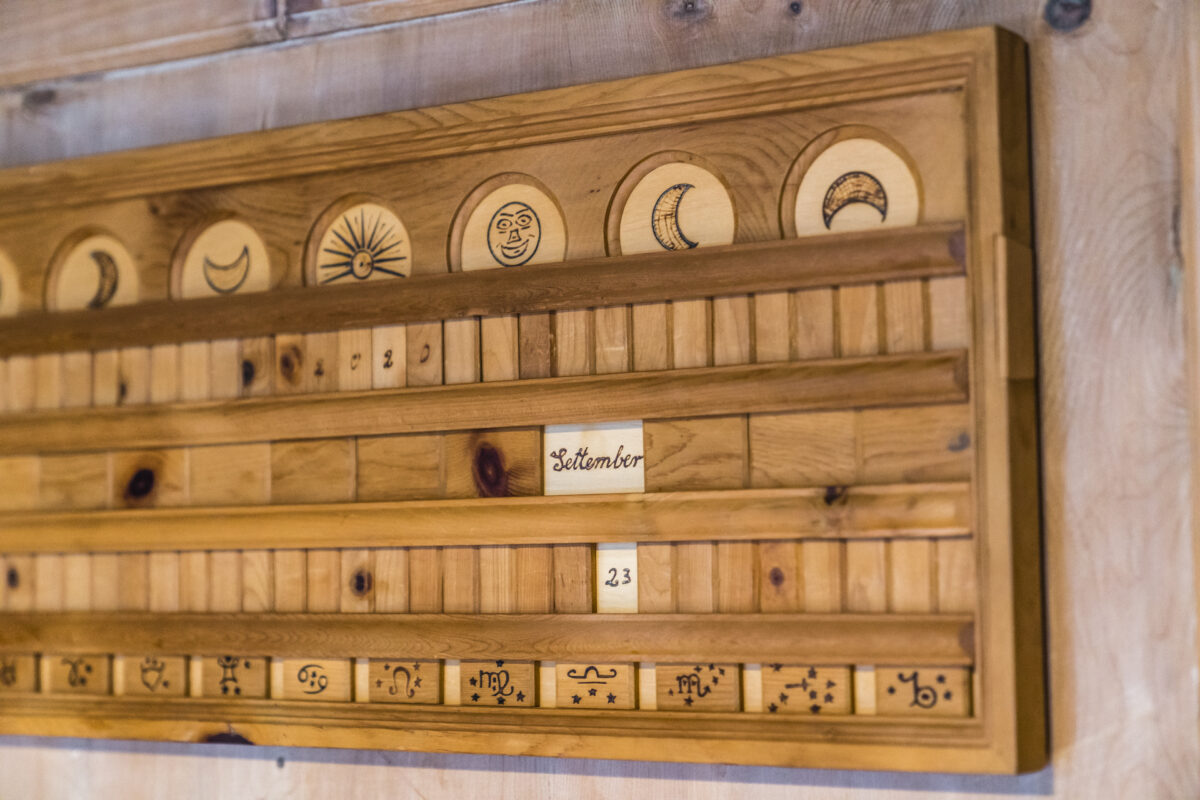
As this is a small hostel with only a few rooms, no dinner is served. However, there is a self-catering kitchen on site (due to the current situation only available for groups by appointment) and otherwise you can stock up on local delicacies at the Meierbeck or ask the Jugi team on site for restaurant tips. But what is also included in the room rate is a breakfast buffet, which convinces with a careful selection of local Biosfera products. The organic milk comes from the farms in the valley, butter, cheese and yoghurt are made from organic milk in the Chacharia valley cheese dairy and the freshly baked bread is delivered by the Meier bakery. Top!
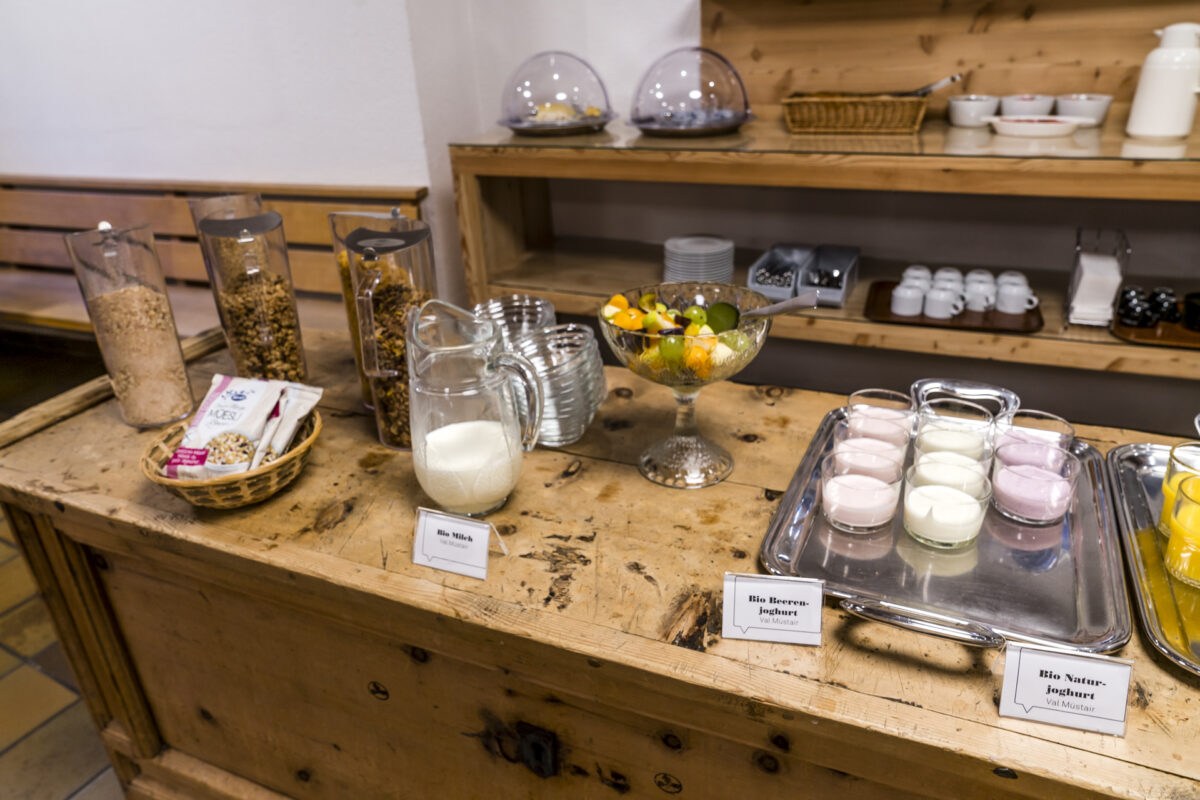
9. Hike through the highest pine forest in Switzerland
Our original plans were for us to make our way from Scuol to the Münstertal on foot. Due to the weather, we had to adjust our plans and were actually already prepared for the fact that hiking would fall completely into the water. But at the end of the long weekend, the weather was still kind to us. And instead of a leisurely Sunday walk from Sta. Maria to Müstair to visit the monastery, we tackled the first winter hike of the still young winter season 2020/2021.
The relatively well-developed path from Lü over the Pass da Costainas to S-charl, which is also a popular bike route in the summer months, is well suited for such an undertaking due to the wide gravel paths (when climbing from Lü to the top of the pass) and the terrain (no sloping places, not near steep slopes). Again, we were on the lookout for deer. But this time there was no roaring – but we saw fresh tracks.
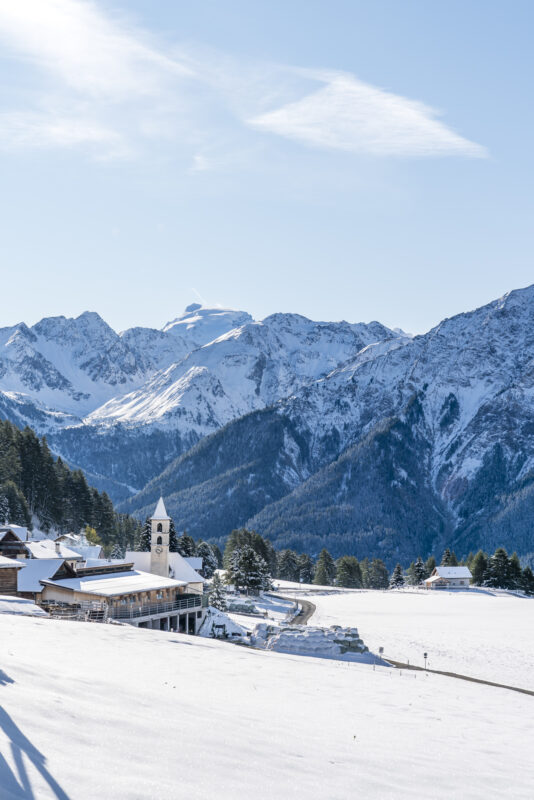
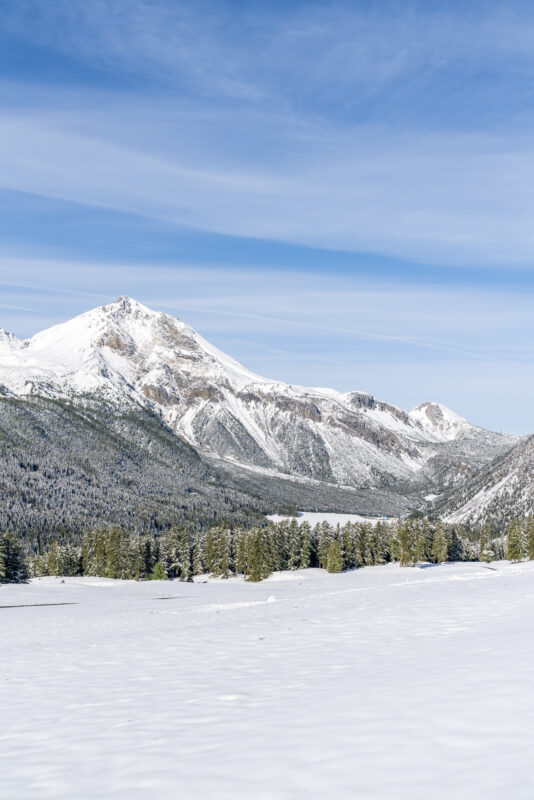
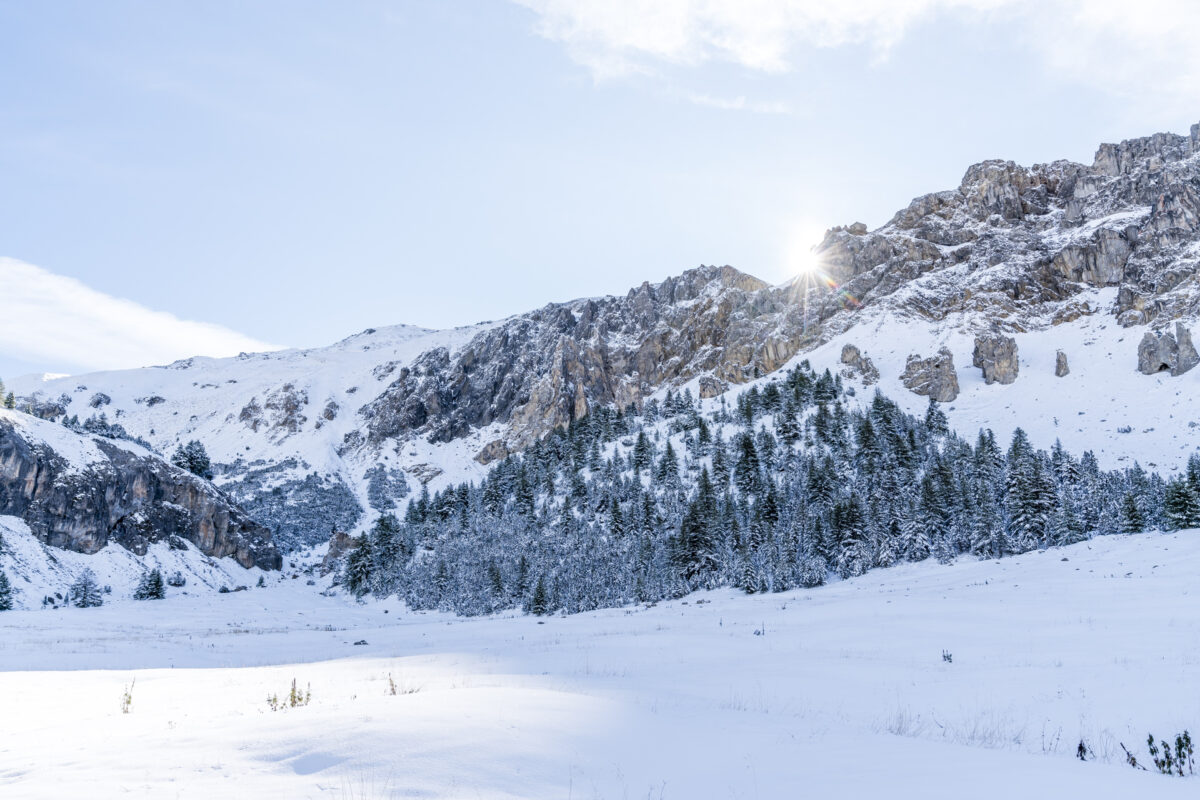
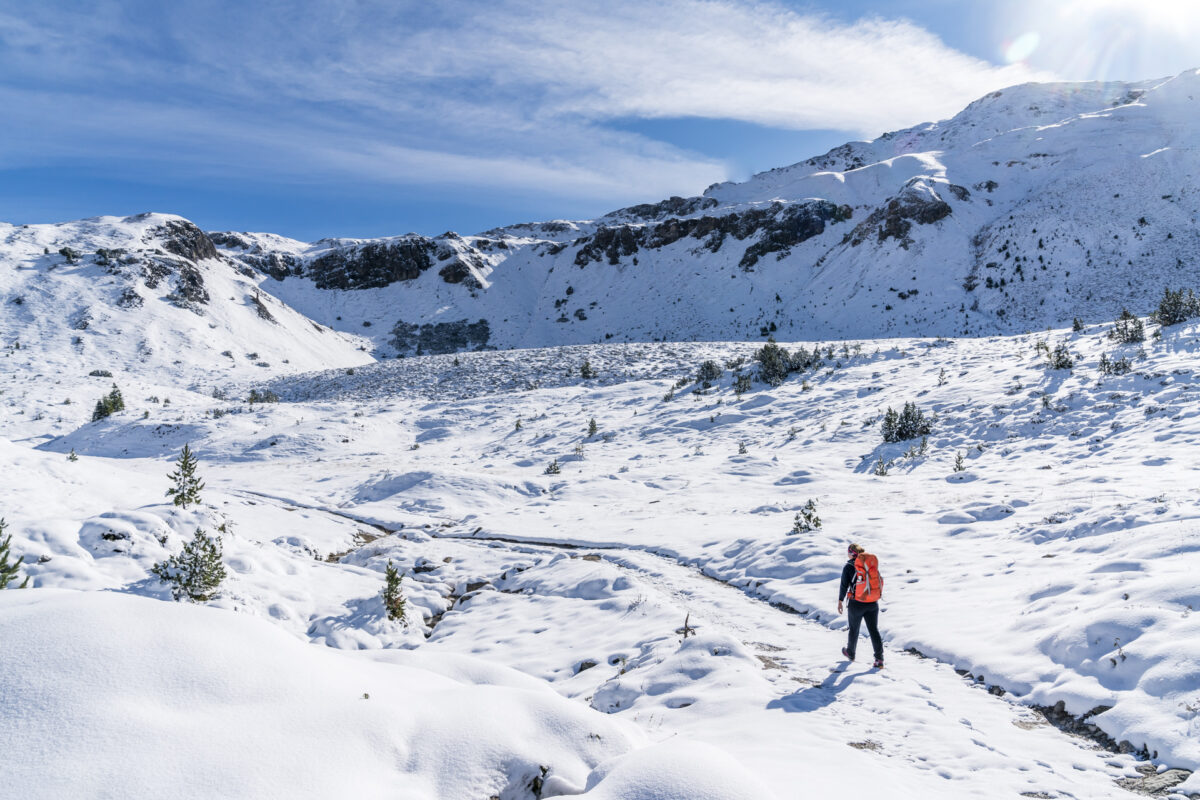
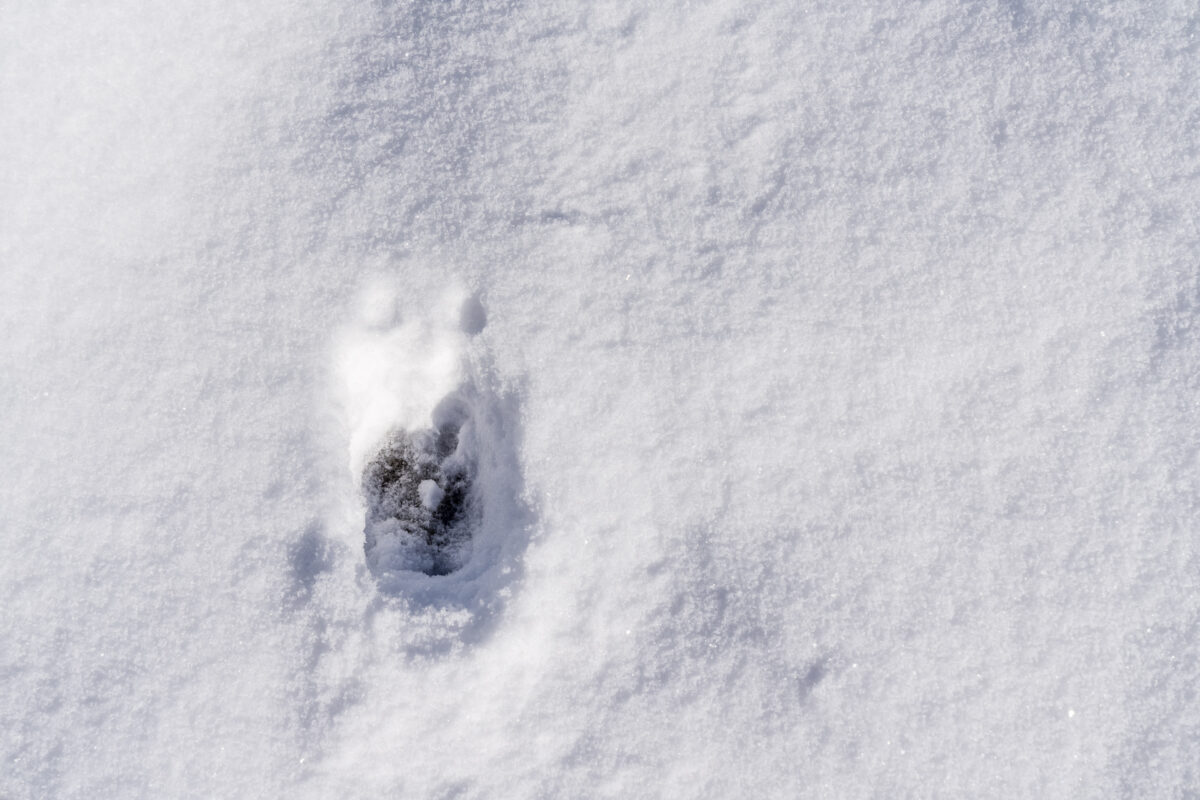

At Alp Astras you can either stay on the wide gravel path or find your way through the highest contiguous pine forest in Switzerland “God da Tamangur“. Depending on the snow conditions, snowshoes are absolutely necessary for this section. At an autumnal onset of winter, however, it is also possible to do without. Although the forest is not part of the national park (although this was actually the original plan), it is still protected as a natural forest reserve.
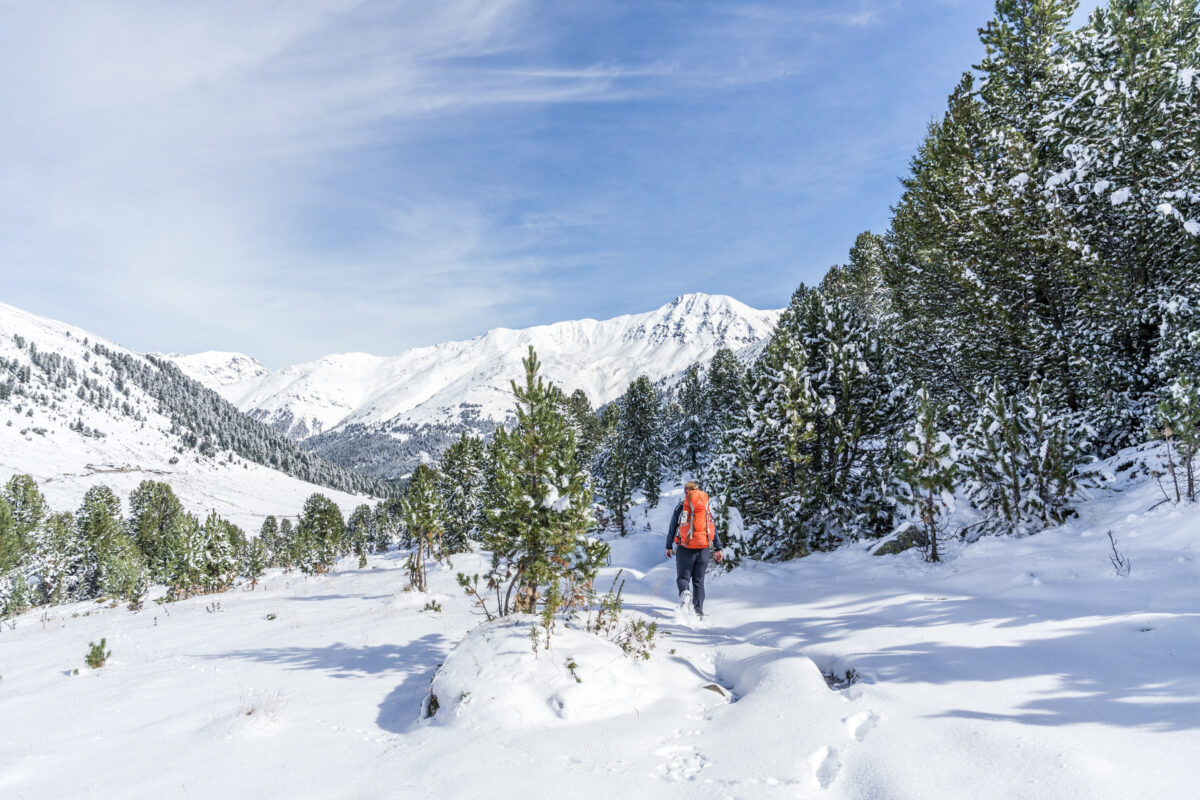
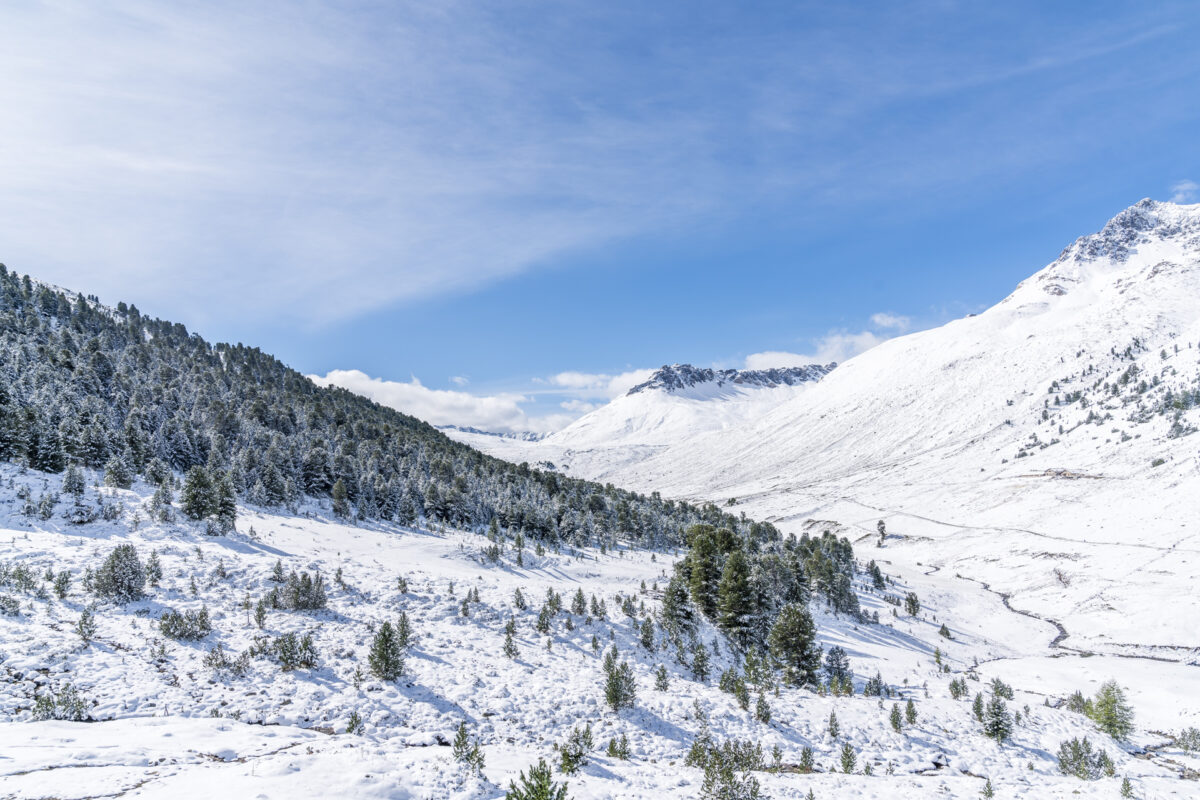
Key data of the tour Lü – S-charl
The following map shows you the route of the hike from Lü over the Pass da Costainas to S-charl. It is a T2 mountain trail that is easy to walk and has no slopes. In the summer months, this route is also used by many bikers (it is also an officially marked bike route).
| Starting point | Bus stop Lü, cumün |
| Length | 14 kilometers |
| Elevation gain | ↗ 454 m 556 m ↘ |
| Duration | 4:00 p.m. |
| Destination | Bus stop S-charl |
Practical tips for your stay in Scuol and Sta. Maria
- An overnight stay at Scuol Youth Hostel costs from 124 CHF* in a double room with private shower/WC. The breakfast buffet is included in the price – dinner costs 19.50 CHF.
- For stays of one night or more, you will receive the guest card of the Engadin Scuol Zernez region. With this card, you benefit from discounts on a variety of experiences (e.g. on the public guided tour of Tarasp Castle or on the guided wildlife observations).
- At Sta. Maria Youth Hostel, accommodation prices for a night in a 2-bed room start at 90 CHF*. The family rooms (with 4 beds) are available from 168 CHF*. As in Scuol, the breakfast buffet is included
- *Everyone has the opportunity to purchase a membership and benefit from discounted accommodation rates. For more information, please visit: www.youthhostel.ch/mitgliedschaft
- Numerous tips in this article are related to opening hours (museums, Bogn Engiadina etc.). Many museums don’t open until the afternoon. Consult the opening hours of the institutions that interest you in advance and make a visit plan.
- The weather is nicer than expected and you are looking for hiking ideas? No problem – in the article linked below, I’ll show you three beautiful hiking routes around Scuol: Hiking paradise Lower Engadine
I myself am surprised at the concentrated load of ideas and tips resulting from this year’s trip to Scuol. And this despite the fact that I was on the verge of postponing the trip due to the bad weather forecast. To be honest, we once again had a fantastic time in the Lower Engadine and returned home with many new impressions. A revair! See you next time. With rain, snow and/or sunshine.


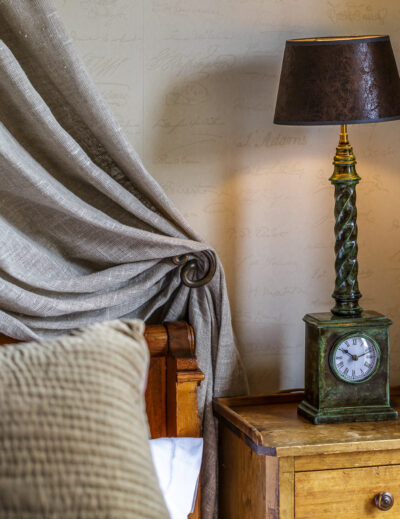
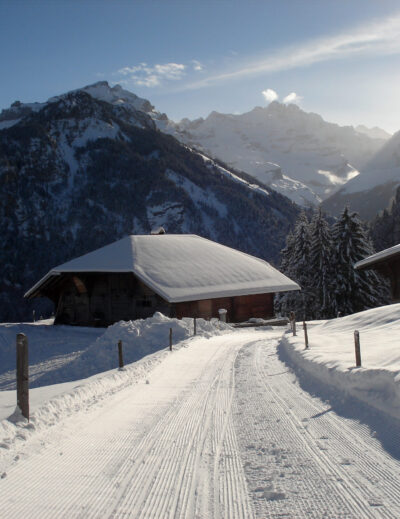
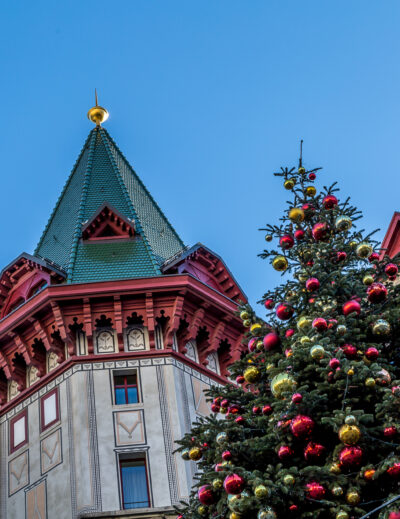
Leave a Reply